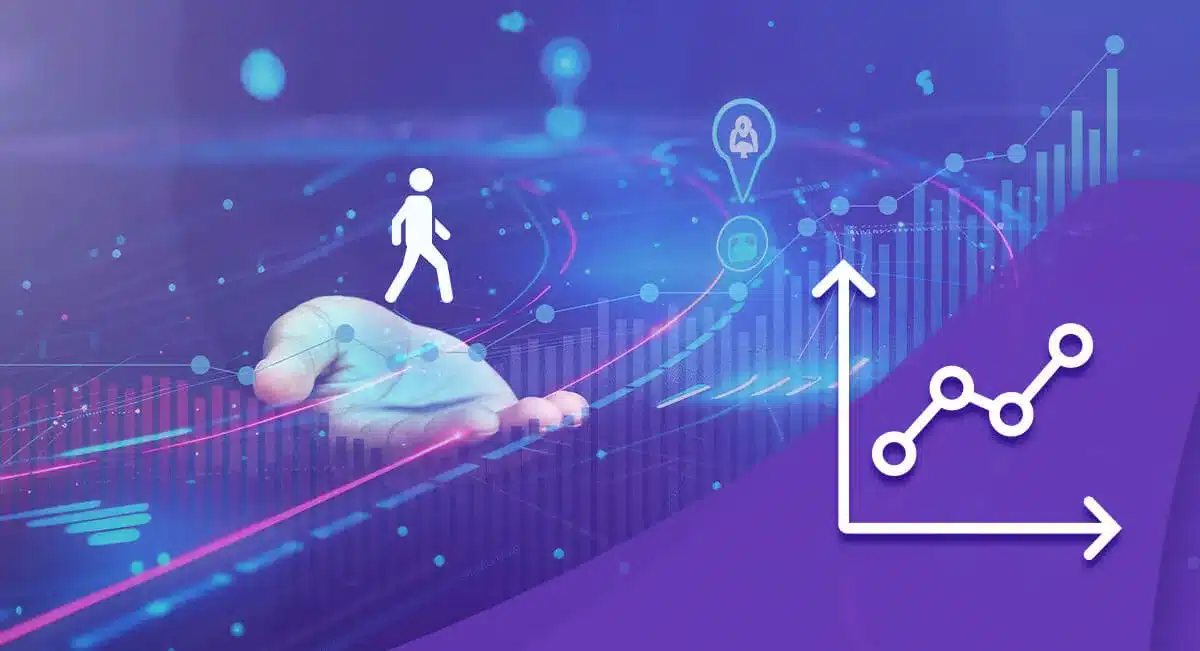Today, customer expectations are higher than ever. They demand seamless, personalized experiences at every touchpoint—and businesses that fail to deliver risk losing them to the competition. This is where customer journey optimization comes in.
Customer journey optimization is the process of analyzing, understanding, and improving every stage of the customer’s interaction with your brand. From the first click to post-purchase engagement, it’s about identifying friction points and creating smooth, tailored experiences that lead to higher satisfaction, loyalty, and ultimately, growth.
Why is this so critical now? Because customers no longer tolerate generic messaging or cumbersome buying processes. They expect brands to anticipate their needs, solve their problems proactively, and make every interaction effortless. Businesses that master customer journey optimization not only meet these expectations—they create a competitive advantage that drives profitable growth.
In this blog, we’ll walk you through the essential steps, proven strategies, and powerful tools you can use to optimize your (and your clients) customer journey. You’ll discover practical ways to map customer touchpoints, eliminate bottlenecks, personalize experiences, and measure success.
Acquire and serve 10x more clients with AI-powered software
What Is Customer Journey Optimization?
Customer journey optimization (CJO) is the strategic process of improving every interaction a customer has with your brand, from the first moment of awareness to long-term loyalty and advocacy.
Many confuse customer journey mapping with customer journey optimization. While the two processes are closely related, they serve different purposes. Customer journey mapping is the act of visualizing each step your customer takes. It helps you see how prospects move through your sales funnel, from discovering your business to becoming loyal clients.
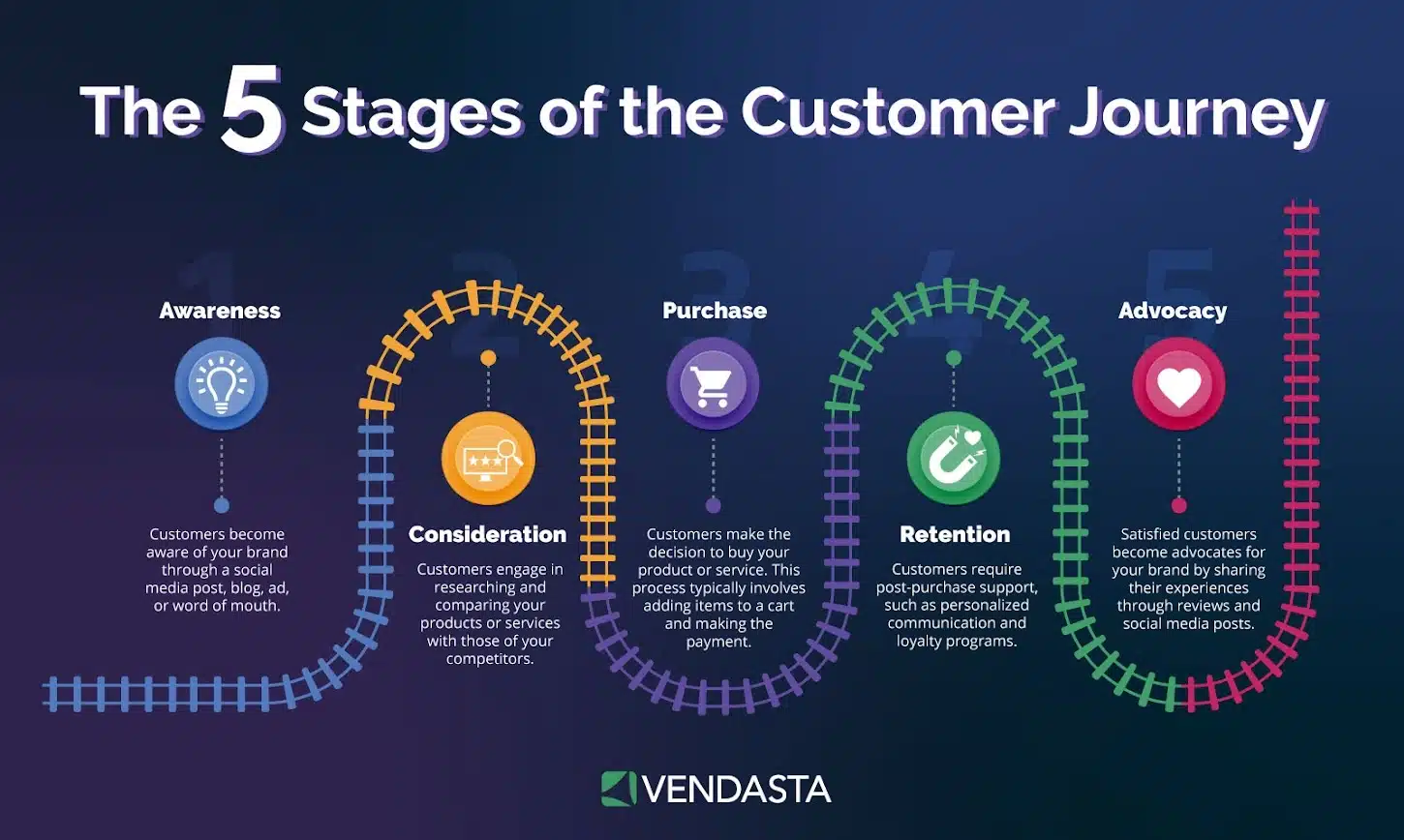
Customer journey optimization, on the other hand, is about using that map to find pain points, close gaps, and improve the experience, making each stage more efficient, personalized, and impactful.
A typical customer journey includes five key stages:
- Awareness – When a potential client first becomes aware of your business or services.
- Consideration – When they begin researching and comparing you to competitors.
- Purchase – The moment they decide to engage your services.
- Retention – Post-purchase experiences that determine whether they continue working with you.
- Advocacy – When satisfied clients refer others, leave positive reviews, or become brand ambassadors.
Effective customer journey optimization ensures that each of these stages is designed with the customer’s needs in mind. It helps eliminate friction, deliver relevant messaging, and provide timely support. The result? More conversions, deeper loyalty, and a scalable foundation for profitable growth.
For marketing agencies, especially, mastering CJO means being able to deliver better results not only for your own business but for your clients as well. It’s a win-win—and increasingly, a necessity in today’s competitive landscape.
Why Is Customer Journey Optimization Important?
Businesses that deliver smooth, personalized, and efficient experiences win more customers, earn greater loyalty, and drive sustainable growth.
Customer Expectations Are Higher Than Ever
Modern customers expect fast, personalized, and seamless interactions across every digital marketing channel, from social media and websites to emails and support chats.
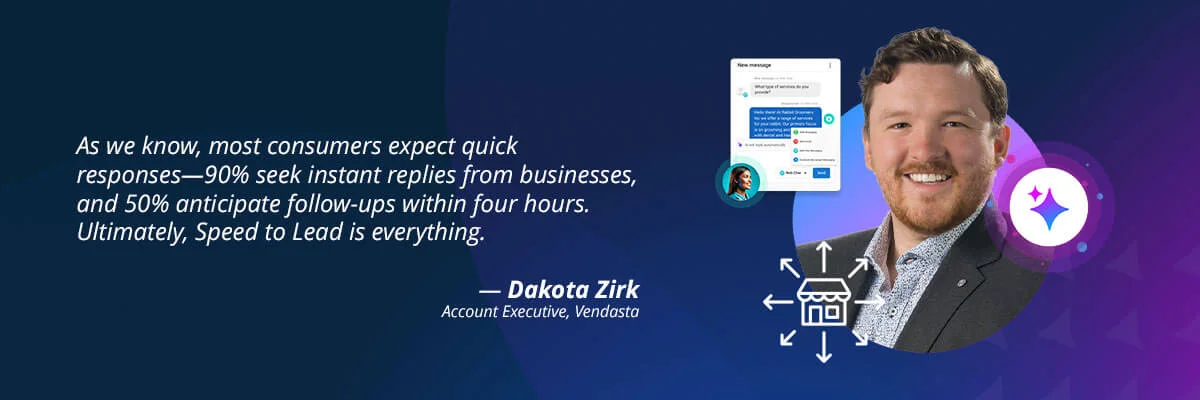
According to Salesforce, 70% of buying experiences are based on how customers feel they are being treated. If brands fail to meet expectations, trust quickly erodes, conversions plummet, and customer churn rates soar.
Customer journey optimization helps businesses meet rising expectations by ensuring every touchpoint is tailored, responsive, and friction-free. It transforms the customer experience from a series of disconnected interactions into a cohesive, satisfying journey.
One clear example of successfully rising to meet customer expectations comes from The Xcite Group. Before partnering with Vendasta, the Xcite Group struggled with workflow inefficiencies caused by managing client interactions across multiple disconnected systems. Important client data was scattered, duplicate data entry was common, and valuable lead information was often lost between platforms.
By integrating their CRM within Vendasta’s platform, The Xcite Group centralized years of client records and connected prospecting tools like Snapshot Reports directly to the CRM. This allowed them to track, nurture, and convert leads seamlessly.
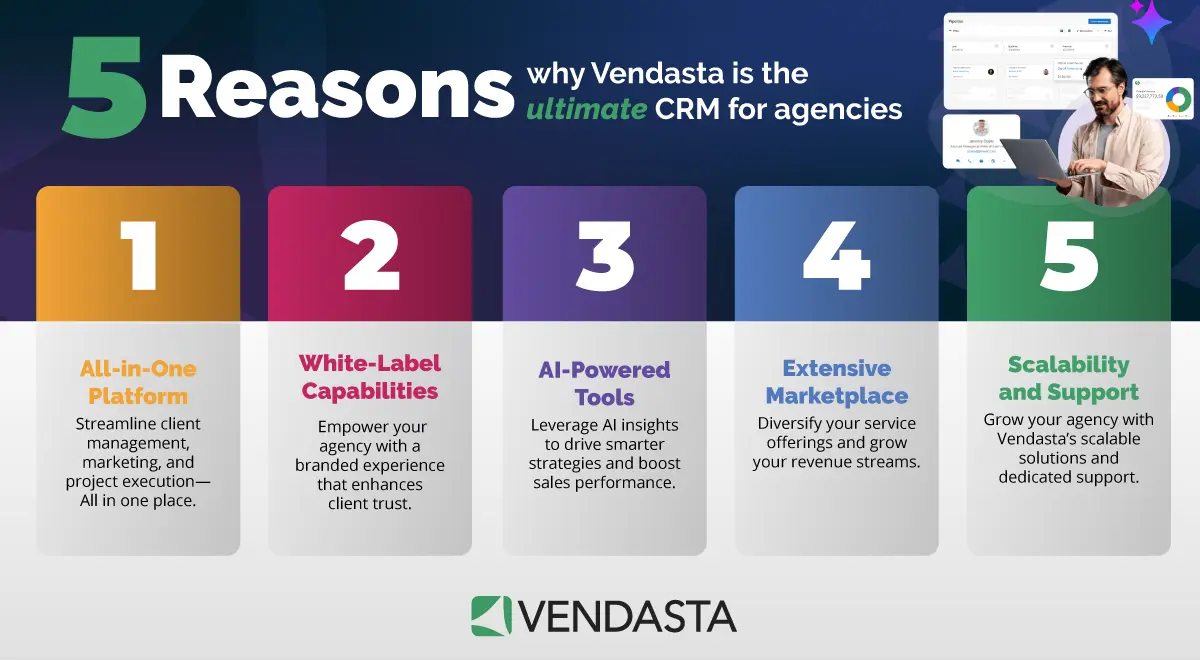
“Now, when a prospect interacts with our Snapshot Report, they are seamlessly added to our CRM, allowing us to nurture and convert leads more effectively,” says Michael of The Xcite Group.
This centralized approach eliminated inefficiencies, created a more cohesive client experience, and ensured that every prospect received timely, relevant follow-up. In a market where customer expectations continue to rise, having an optimized, integrated customer engagement platform like this is no longer a luxury—it’s a necessity.
Higher Conversion Rates
Customer journey optimization is one of the most effective ways to increase conversion rates by removing friction and aligning every customer touchpoint with their goals.
Optimizing the customer journey enhances conversion rates in several critical ways:
- Frictionless Navigation. Simplifying steps like form fills, scheduling, and checkouts reduces abandonment and keeps prospects moving forward.
- Personalized Messaging. Delivering content and offers based on a lead’s specific behaviors, interests, and stage in the journey increases relevance and action.
- Timely Engagement. Automated responses and smart follow-ups ensure no lead goes cold, improving the chances of conversion dramatically.
After implementing Vendasta’s AI Receptionist, which uses conversational AI to immediately engage and qualify leads, The Xcite Group achieved a remarkable 70% lead-to-appointment conversion rate.
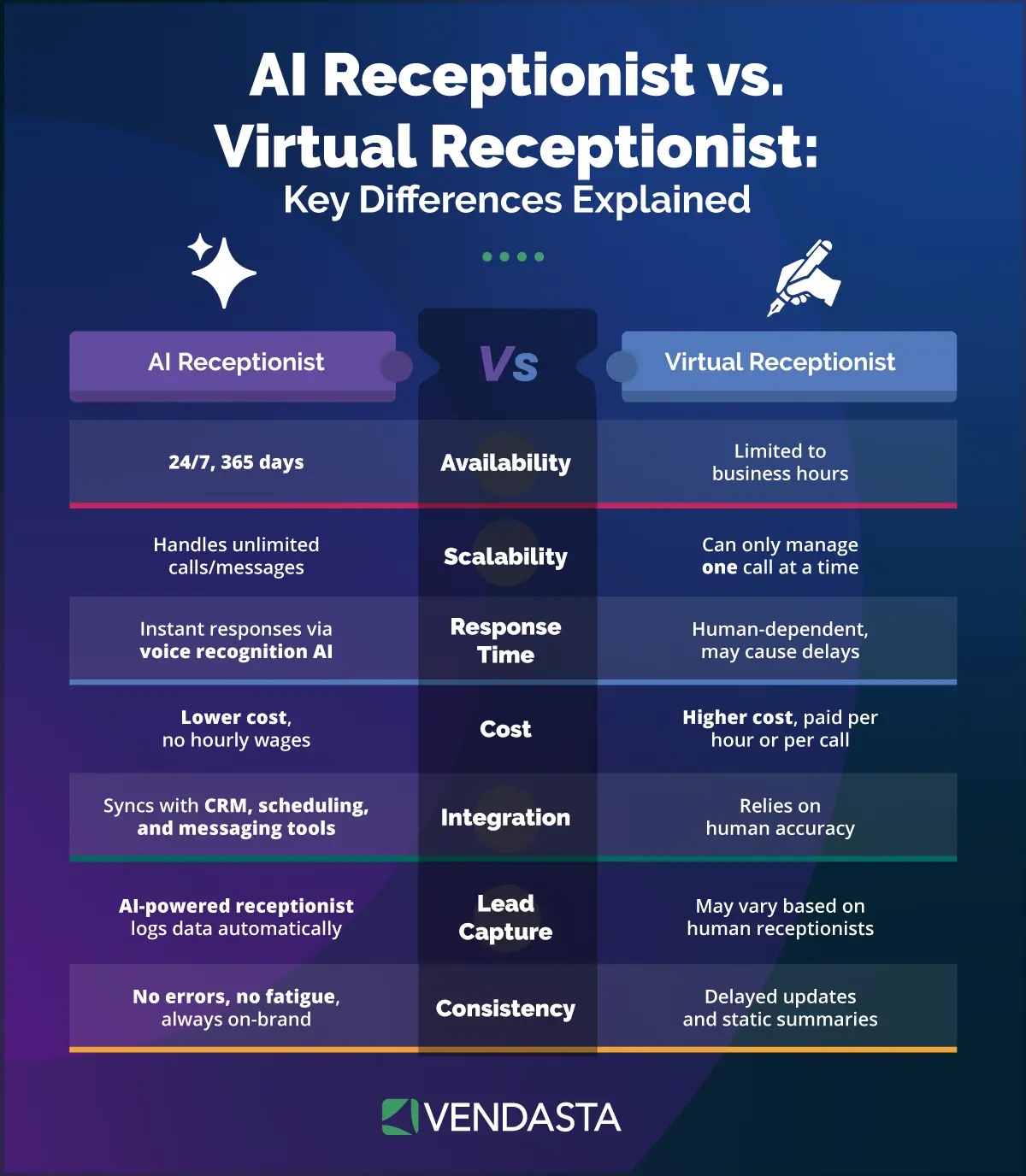
This transformation streamlined the initial contact process, reduced response time, and provided a personalized experience that nurtured prospects into booked appointments faster and more efficiently than before.
“Shortly after launching AI Receptionist, I got a notification—‘You have a meeting scheduled.’ I hadn’t lifted a finger. It was a plumbing company, and the AI assistant, Sophia, had handled the conversation, qualified the lead, and booked the appointment for me,” says Michael. “I did nothing. It was wonderful.”
For businesses, mastering customer journey optimization not only improves their internal lead-to-client conversion rates but also enables them to deliver greater value to their clients. By focusing on a seamless customer experience, agencies can drive better results, improve ROI, and scale faster and more sustainably.
Better Customer Retention
Winning a new customer is only half the battle. Retaining customers and increasing their CLV is significantly more cost-effective than acquiring new clients. According to the Harvard Business Review, acquiring a new customer can cost five to 25 times more than retaining an existing one.
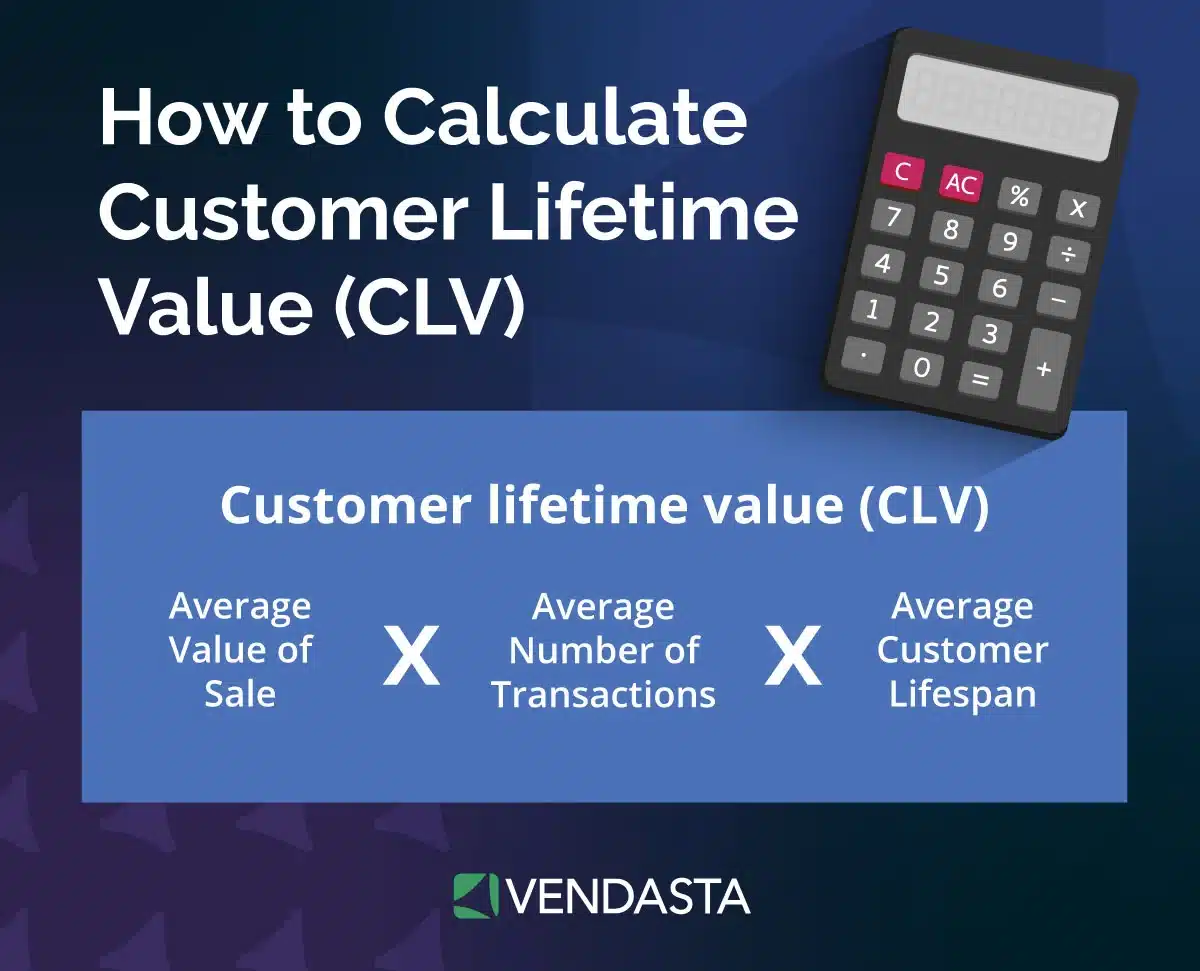
By nurturing existing client-agency relationships through optimized post-purchase experiences like onboarding, customer support, and customer engagement, it ensures that clients stay satisfied long after the initial sale.
Happy customers are far less likely to churn—and far more likely to return for repeat purchases or upselling opportunities. Customer journey optimization ensures you are consistently meeting (and exceeding) expectations throughout the entire client relationship, not just during the buying phase.
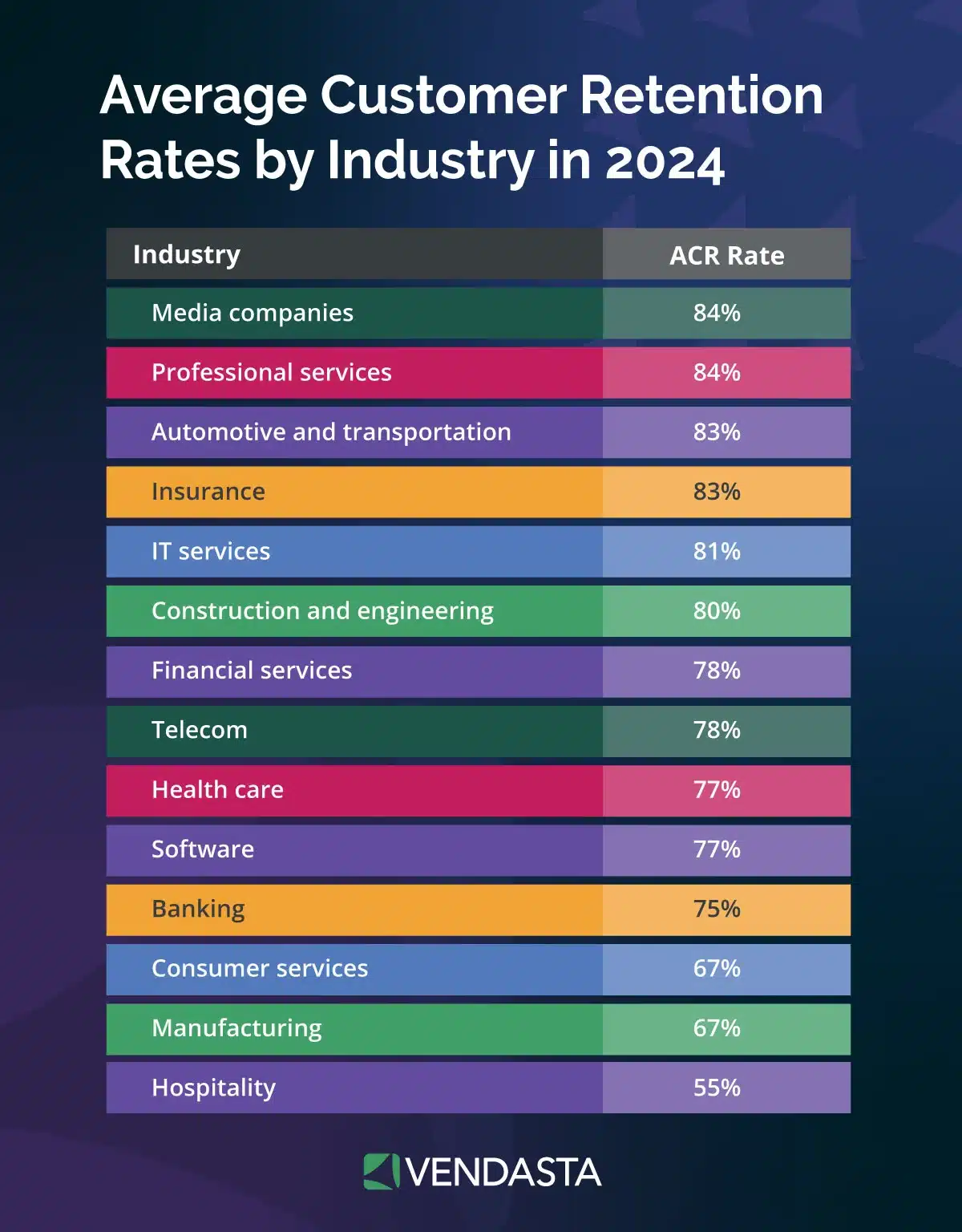
Empowering Clients Through Self-Service
The Xcite Group exemplifies how an agency can optimize customer engagement after an initial purchase. They achieved this by shifting from fully managed services to a more self-service-oriented model.
To ease this transition, The Xcite Group introduced Vendasta’s Business App to their clients. Business App is a white-label client portal where clients can monitor their reputation, access real-time analytics, manage listings, and interact with leads. Rather than feeling abandoned or overwhelmed, clients were excited to have these powerful resources at their fingertips.
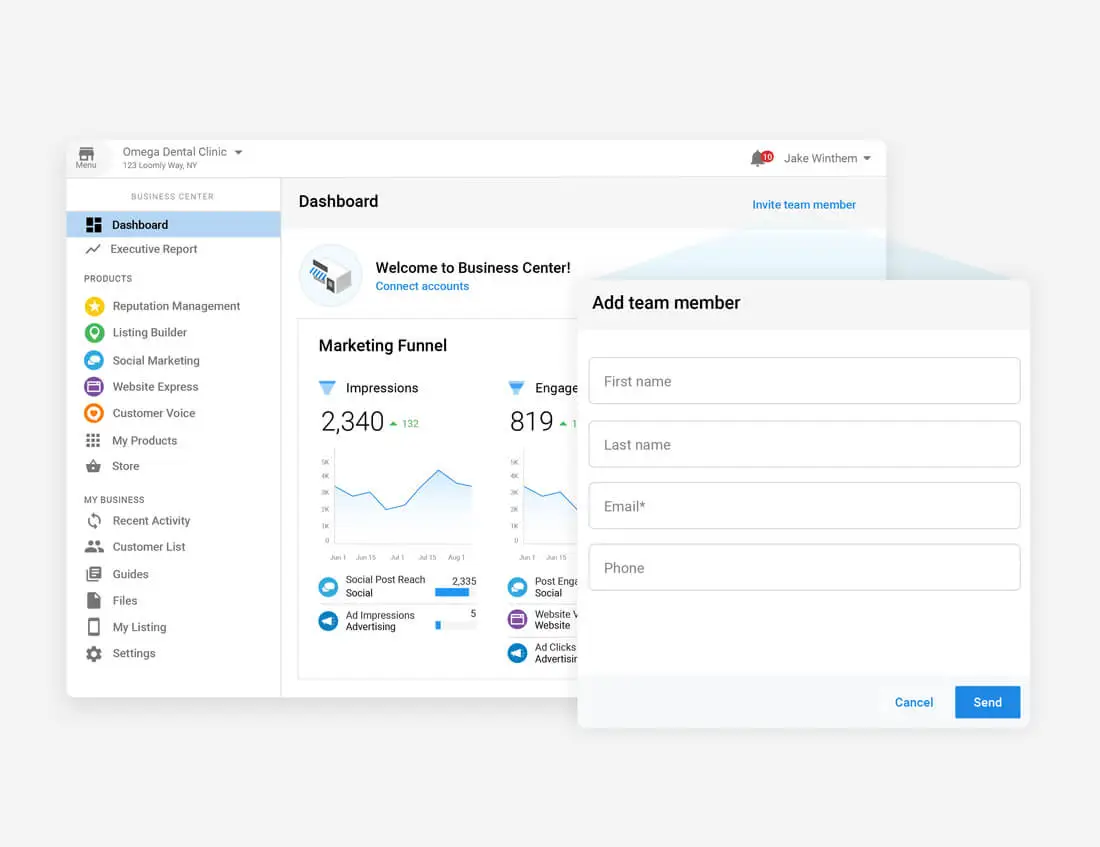
“Business App is opening doors to these smaller businesses. Now, they have resources right at their fingertips that they wouldn’t have had otherwise,” said Michael from The Xcite Group.
By enabling their clients to self-serve for certain tasks while continuing to offer hands-on agency support for more strategic initiatives, The Xcite Group created a hybrid model that combined convenience with expertise. This approach allowed them to better meet customer expectations for immediacy, transparency, and control—key factors in an optimized customer journey.
The results were impressive. Thanks to a broader customer journey optimization strategy powered by Vendasta’s AI products—such as AI Receptionist for instant AI lead generation and the Business App for self-service empowerment—The Xcite Group increased its client retention rate from 70% to an astonishing 100%. Clients felt more valued, better equipped, and more connected to their agency, significantly reducing churn and building long-term loyalty.
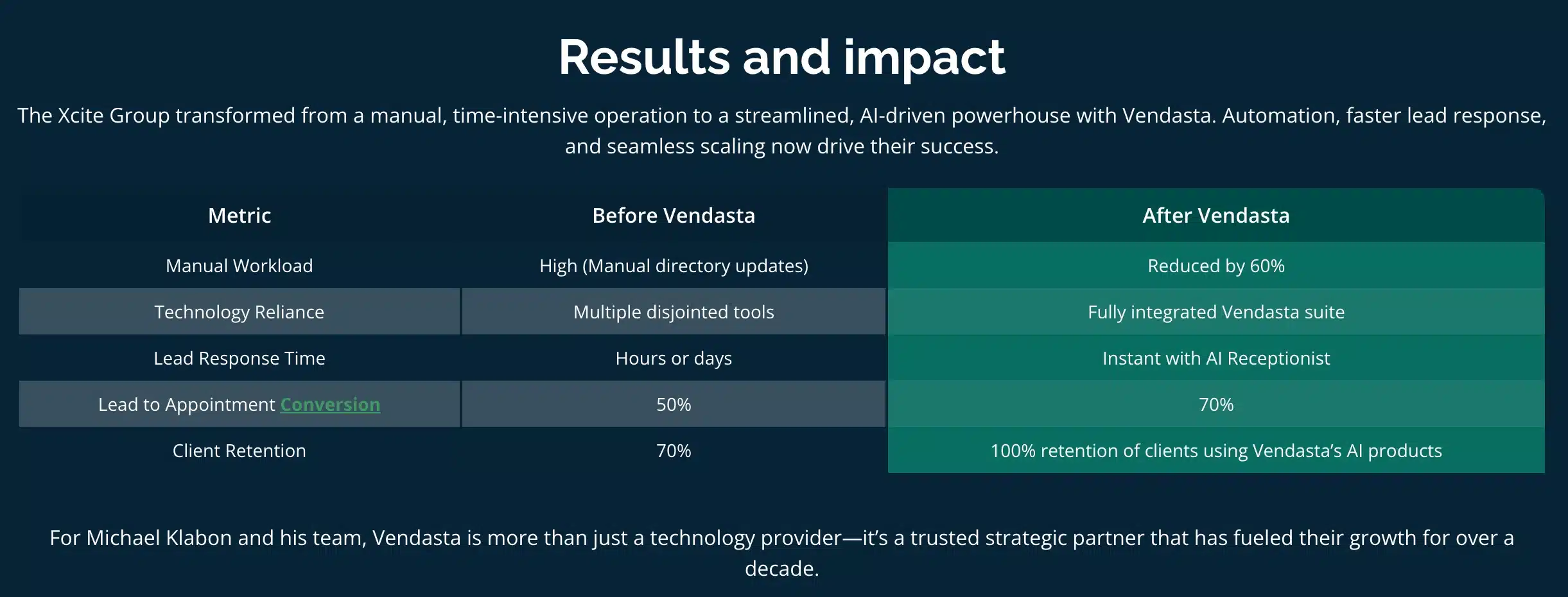
This case study proves that empowering customers through smart technology and proactive journey optimization not only meets modern expectations but also drives measurable, sustainable growth.
Greater Customer Advocacy (Reviews and Referrals)
Happy customers don’t just stick around—they become your best marketing channel. When businesses consistently deliver exceptional experiences through customer journey optimization, they increase the likelihood that satisfied clients will leave glowing reviews and refer others.
These reviews are more than vanity metrics—they directly impact buying decisions. According to data from ReviewTrackers, 35% of users filter for four-star reviews, and only 10% filter for five stars, suggesting that consumers are drawn to realistic, consistently positive experiences over perfection. Meanwhile, only 1% of users filter for one or two stars, showing just how quickly low ratings can disqualify a business in the eyes of potential buyers.
Even more telling: 30% of users don’t filter reviews at all, meaning your overall reputation—shaped by the volume and recency of positive feedback—matters just as much as your rating. This underscores the value of turning satisfied customers into active advocates.
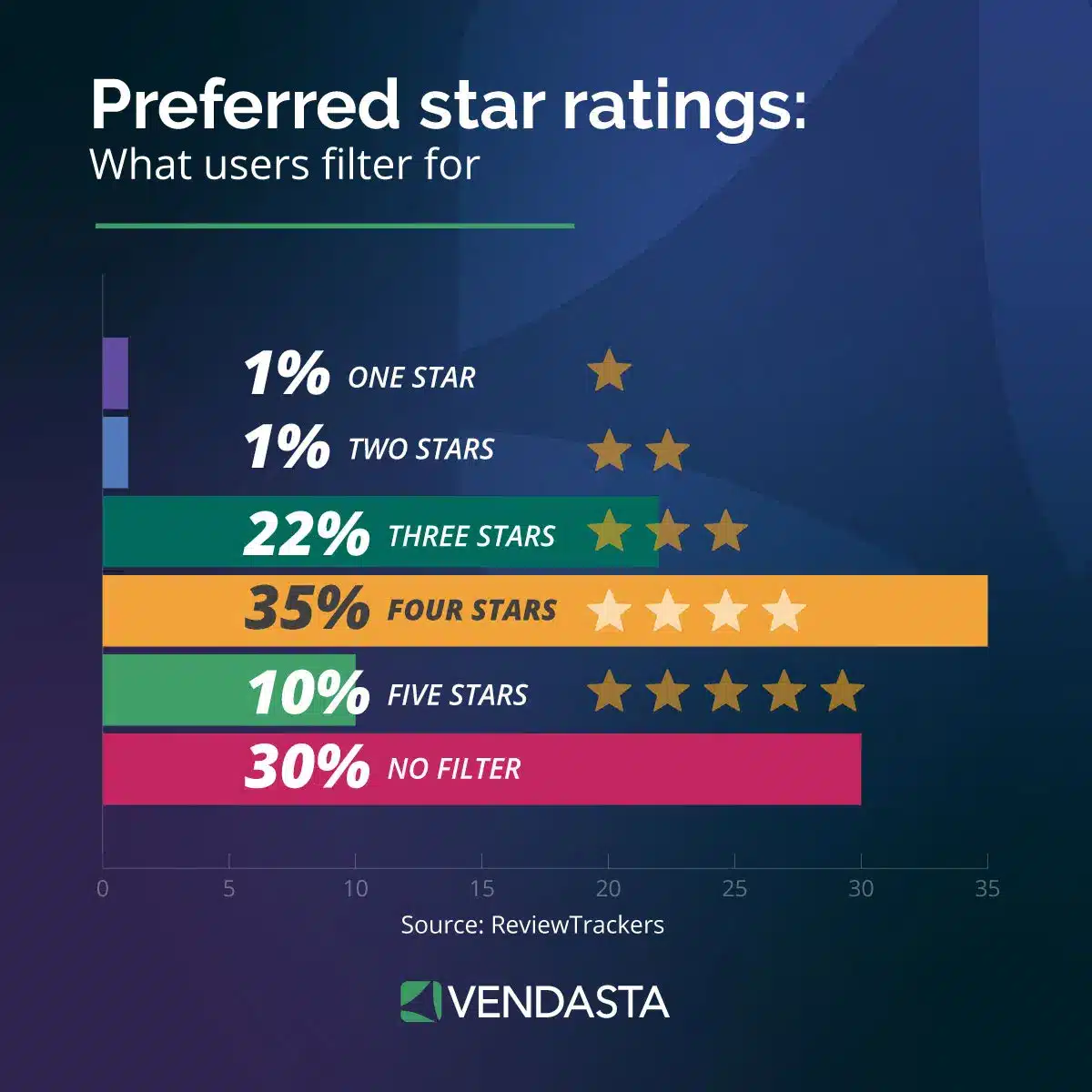
Steps to Optimize the Customer Journey
Customer journey optimization is an ongoing process of mapping, refining, and aligning every client interaction to deliver seamless, personalized experiences that drive growth and meet client expectations.
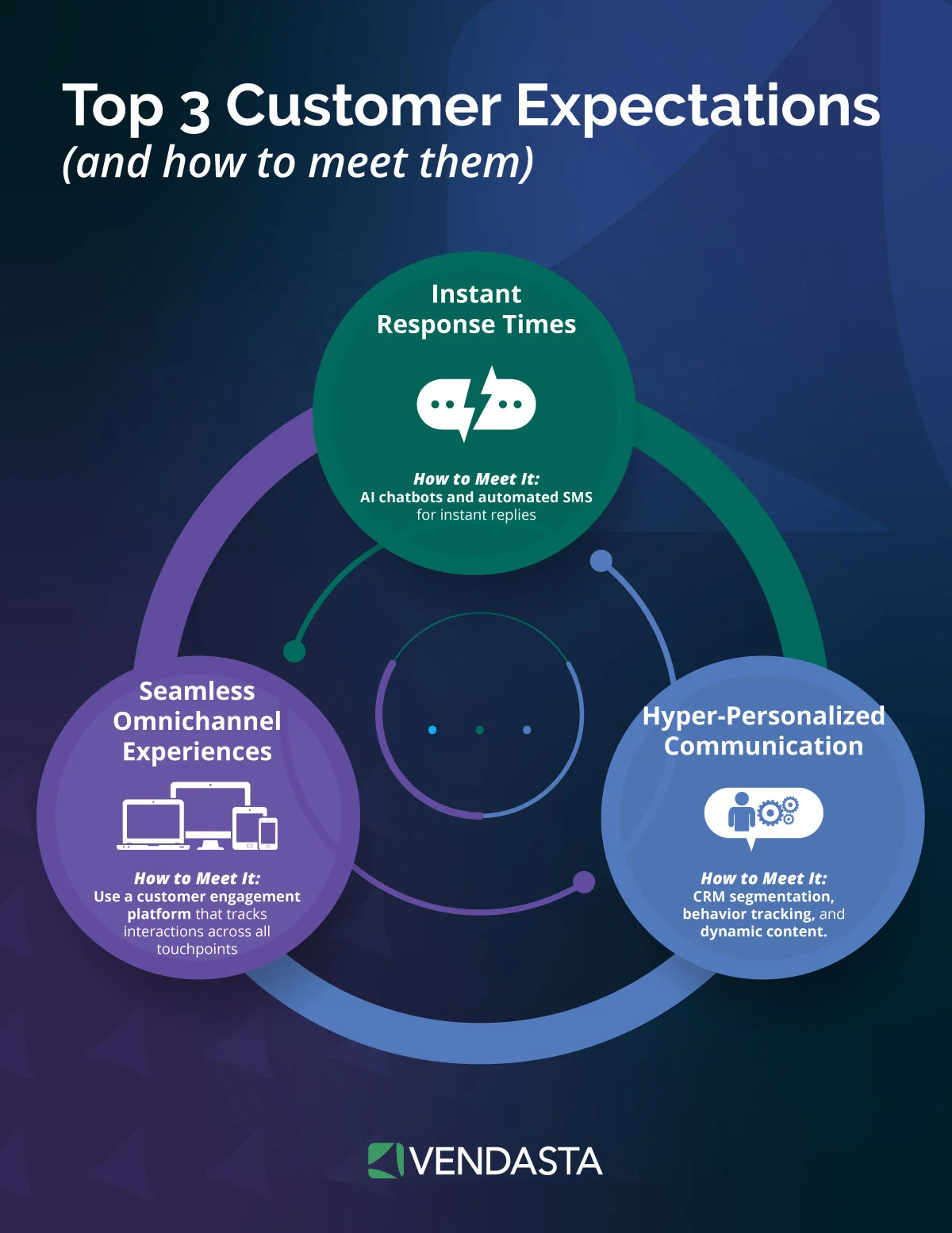
Here’s how to do it effectively:
1. Map the Current Customer Journey
The first step in customer journey optimization is understanding how customers currently engage with your brand. This means mapping out every touchpoint—from the first ad they see, to the emails they receive, to their experience with your sales and support teams.
Below is a comprehensive list of the dozens of digital and human touchpoints that you should keep in mind, along with tools that help identify friction at each stage:
Stage 1: Awareness
- Social media ads (Facebook, Instagram, LinkedIn).
- Google search and SEO content.
- Display ads and banner ads.
- YouTube videos or podcast mentions.
- Word-of-mouth or online reviews.
Awareness Tools
Tools to identify friction:
- Web Analytics Tools (e.g., Google Analytics, GA4): Track bounce rates, time on page, and conversion paths to spot where users drop off.
- User Behavior Analytics Tools (e.g., Hotjar, Microsoft Clarity): Use heatmaps, session recordings, and scroll tracking to identify usability issues or content that fails to engage.
- Reputation Management Tools (e.g., Vendasta): Monitor listing accuracy and online reviews to ensure discoverability and trust during the awareness stage.
- SEO Tools (e.g., SEMrush, Ahrefs): Analyze SEO performance and identify content gaps or pages that don’t attract the right traffic.
- Social Listening Tools (e.g., Brand24, Mention): Monitor what people are saying and competitors to uncover confusion, complaints, or missed expectations in early-stage messaging.
Stage 2: Consideration
- Website visits (home page, landing pages).
- Reading blog posts or case studies.
- Downloading whitepapers or guides.
- Watching demos or explainer videos.
- Attending webinars.
- Engaging in chatbots or live chat.
- Signing up for newsletters.
Consideration Tools
Tools to identify friction:
- CRM Systems (e.g., Vendasta, HubSpot): Review lead activity logs to identify drop-off points in your sales funnel or where follow-ups are delayed or missed.
- Chatbot and Live Chat Analytics (e.g., Intercom, Salesloft): Measure how often users abandon chats or fail to get resolutions—key signs of friction in real-time support or conversion moments.
- Conversion Rate Optimization Tools (e.g., VWO, Optimizely): Run A/B tests and analyze user behavior to see which design, content, or CTA changes reduce friction and increase conversions.
Stage 3: Purchase
- Booking a call or demo.
- Filling out a contact form.
- Engaging with sales reps.
- Receiving a proposal or quote.
- Subscribing or purchasing online.
Purchase Tools
Tools to identify friction:
- Meeting Scheduling Tools (e.g., CalendarHero, Calendly): Track booking completion rates and abandonment to identify drop-off points during scheduling.
- Call Analytics Tools (e.g., CallRail, Invoca): Track call duration, drop-offs, and missed calls to uncover weaknesses in rep engagement.
- Proposal Software (e.g., PandaDoc, Proposify, Qwilr): Track when proposals are opened, how long they’re viewed, and if/when they’re signed.
- Payment Processors (e.g., Stripe, Square): Monitor failed transactions, declined payments, and error messages that might block conversions.
Stage 4: Retention
- Onboarding email sequences.
- Accessing client portals (e.g., Business App).
- Receiving newsletters or how-to guides.
- Submitting support tickets.
- Attending Q&A sessions.
Retention Tools
Tools to identify friction:
- Helpdesk Platforms (e.g., Zendesk, Freshdesk): Analyze support ticket categories and resolution times to identify common issues or recurring customer pain points.
- Client Portal and Engagement Tools (e.g, Vendasta’s Business App): Track client login frequency, feature usage, and engagement to identify drop-off points or underutilized tools in the post-sale experience.
- Email Automation Tools (e.g, Vendasta, Hubspot): Measure email open rates, link clicks, and automated engagement sequences to detect where onboarding content fails to resonate or convert into active usage.
Stage 5: Advocacy
- Leaving a review or testimonial.
- Referring a friend or colleague.
- Posting positive feedback on social media.
- Participating in case studies or success stories.
Advocacy Tools
Tools to identify friction:
- Customer Feedback Tools (e.g., SurveyMonkey, Typeform, AskNicely): Collect direct feedback after onboarding or support interactions to identify friction in service delivery or product usability.
- NPS and CSAT Tools (e.g., Delighted, Qualtrics, Vendasta): Track satisfaction and promoter scores over time to detect declining sentiment that might indicate journey friction.
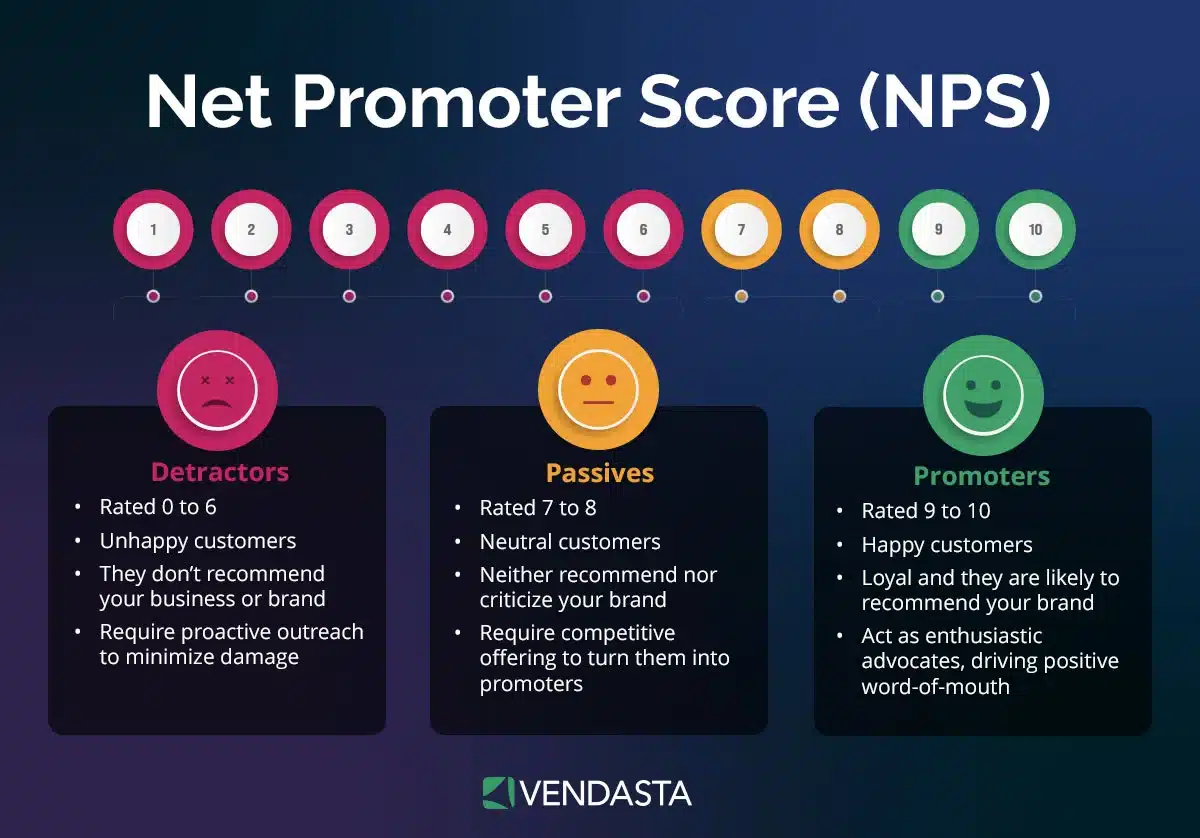
Pro Tip: To increase retention and drive advocacy at the same time, use Vendasta’s Reputation Management software to automate post-purchase review requests. The system automatically prompts satisfied customers to leave positive reviews on the platforms that matter most.
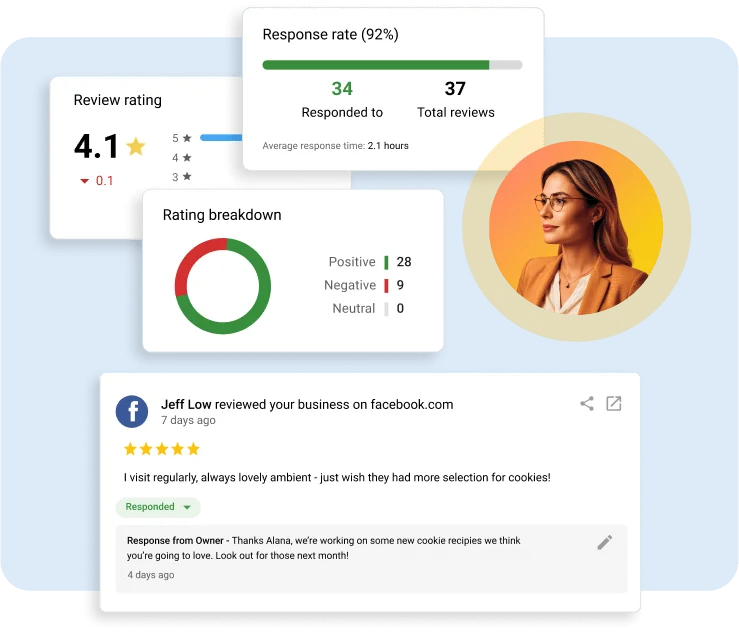
2. Understand Customer Needs and Pain Points
To truly optimize the customer journey, you need to see your brand through the eyes of your customers. That means developing a deep understanding of their motivations, frustrations, and decision-making behaviors.
Gathering both qualitative data (like interviews, reviews, and surveys) and quantitative data (such as analytics, heatmaps, and CRM reports) is essential to uncover what your customers want—and what’s holding them back.
But understanding your audience goes beyond collecting data. It requires translating those insights into actionable profiles that guide your messaging, touchpoints, and experiences. This is where buyer personas and ideal customer profiles (ICPs) come in.
Buyer Personas vs. Ideal Customer Profiles: What’s the Difference?
Buyer Personas are semi-fictional representations of your customers based on real data and educated assumptions.
They reflect the individual decision-makers in your target market, including:
- Job title and role
- Pain points and goals
- Buying triggers
- Communication preferences
- Objections and challenges
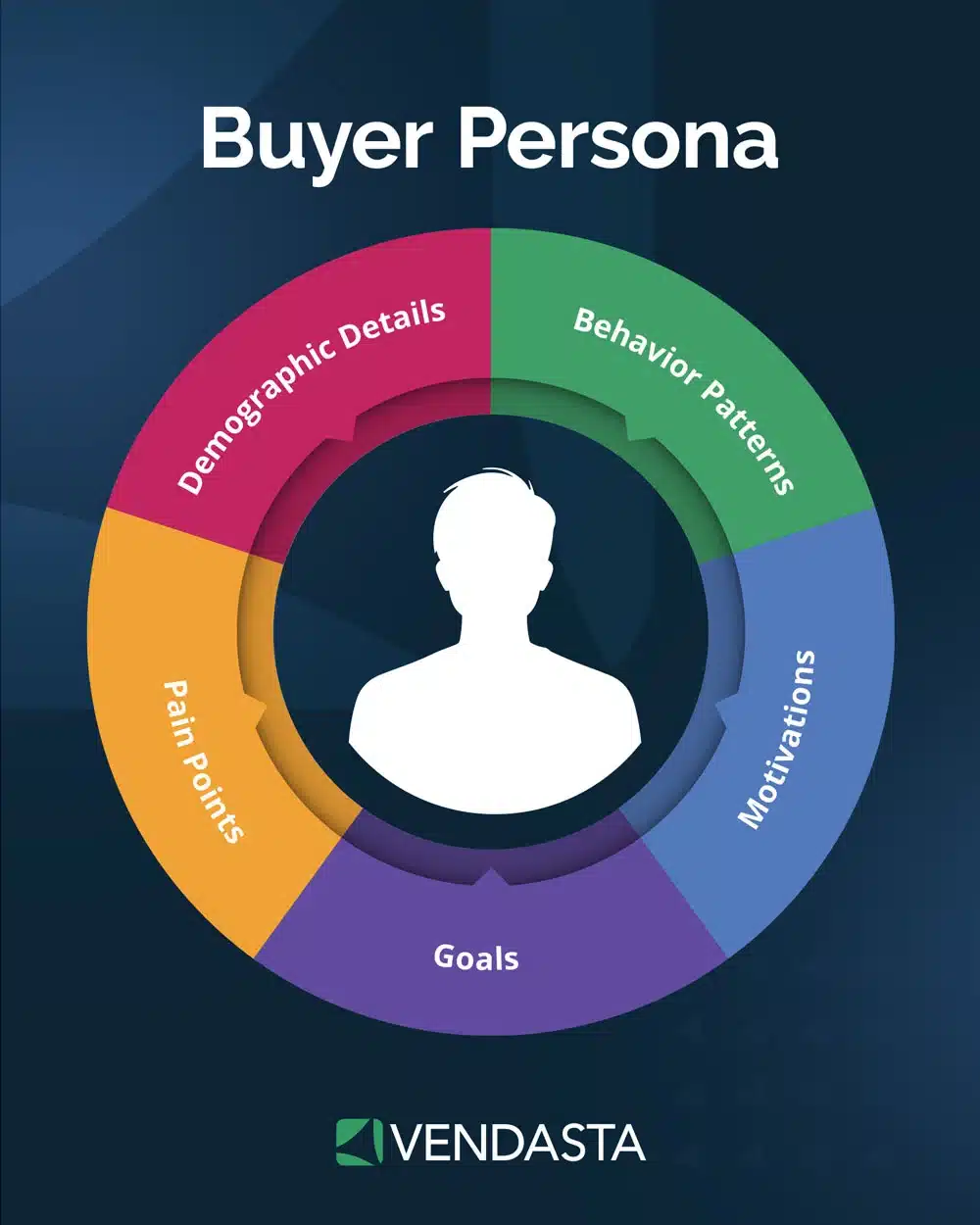
Ideal Customer Profiles (ICPs) define the type of business that’s the best fit for your product or service.
They focus on the characteristics of high-value accounts, such as:
- Industry and company size
- Revenue range
- Geographic location
- Tech stack or operational maturity
- Lifetime value potential
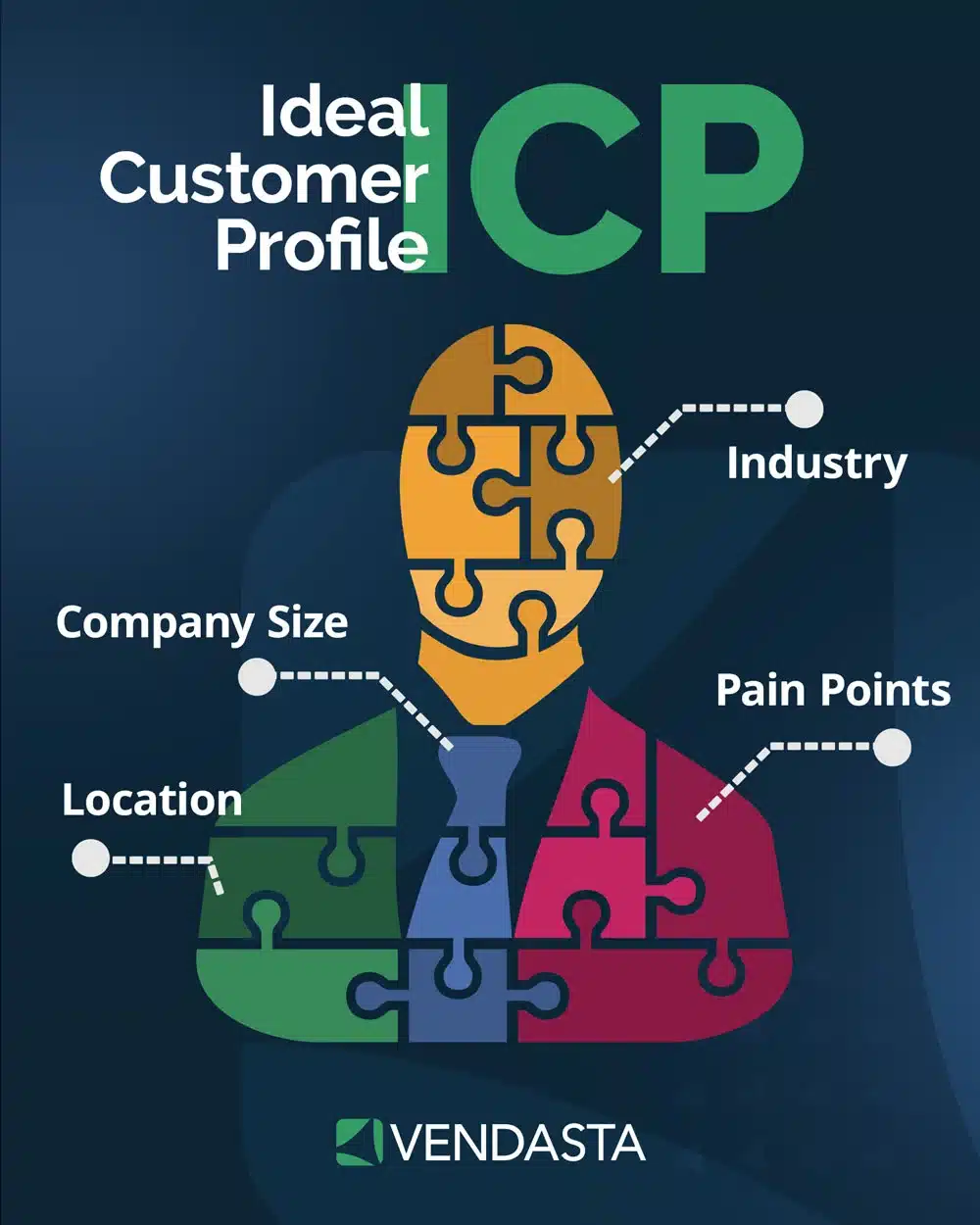
Why These Profiles Matter in Customer Journey Optimization
Both buyer personas and ICPs are critical because they guide how you shape and tailor the customer journey:
- Targeted Content: Knowing the persona allows you to create messaging that speaks directly to individual pain points, increasing engagement at early-stage touchpoints like ads, emails, or blog content.
- Aligned Sales Outreach: Understanding the ICP helps your sales team focus their time and energy on accounts most likely to convert and retain, reducing wasted effort and shortening sales cycles.
- Personalized Experiences: These profiles help you deliver the right message at the right time through the right channel, from onboarding workflows to retention campaigns.
- Efficient Automation: Whether you’re building chatbot scripts, email sequences, or product recommendations, knowing who you’re speaking to ensures your automation feels personalized.
- Reduced Friction and Drop-Offs: When the journey reflects a deep understanding of the customer’s mindset, they’re more likely to feel heard, understood, and guided.
In short, clear personas and ICPs are foundational to customer journey optimization. They ensure that every interaction is relevant and builds trust and momentum from the first touchpoint to long-term loyalty.
3. Leverage Data to Personalize Interactions
Today’s consumers expect businesses to know who they are and what they need. This is where personalization becomes a powerful differentiator in customer journey optimization.
Leverage your CRM data, browsing history, past purchases, and behavioral triggers to deliver relevant content, offers, and follow-ups. Use segmentation and dynamic messaging to create hyper-targeted campaigns that speak directly to a customer’s intent.
4. Automate Engagement Across Stages
To deliver seamless experiences without stretching your team thin, automation is essential. Use:
- Marketing automation to nurture leads with emails, content, and offers.
- Sales automation to prioritize hot leads and trigger personalized outreach.
- Service automation to handle routine client requests and follow-ups.
Here’s how automation plays a role across each stage of customer journey optimization:
- Lead Capture: AI captures leads from chat, web forms, and calls. These leads are automatically added to the CRM and routed appropriately.
- Follow-Up: SMS follow-ups are triggered, and AI assistants can respond to inquiries or even book appointments directly, reducing the need for human intervention.
- Pipeline Progression: Auto lead nurturing kicks in, using email or SMS campaigns tailored to the lead’s behavior and stage in the funnel.
- Post-Sale Engagement: After a deal is closed, the AI CRM sends an NPS request. Based on the customer’s response, follow-up is automated:
- Detractors receive a feedback form and are routed to customer support.
- Promoters are guided to leave a positive review and enter nurturing flows to encourage future purchases.
Take a look at how Vendasta automates the entire customer journey:
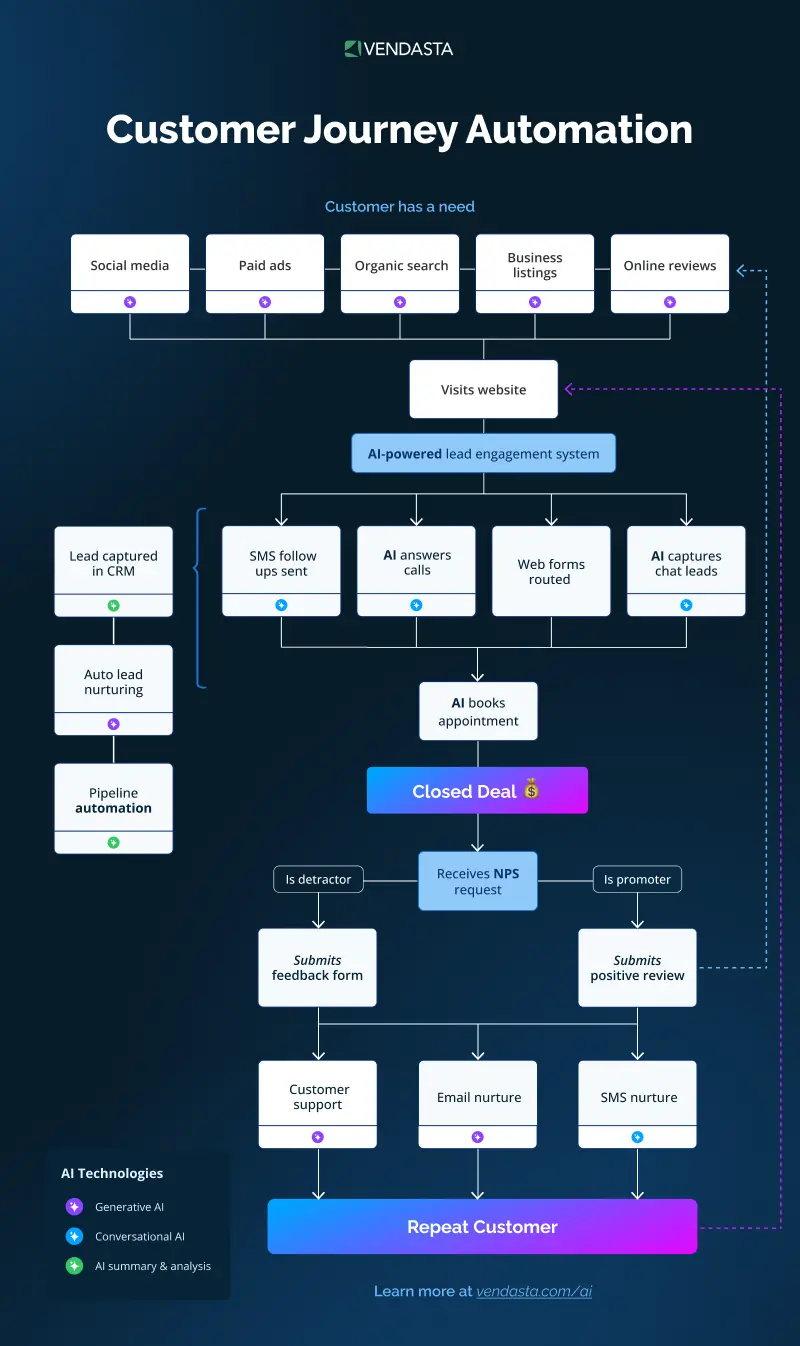
AI technologies like conversational AI (for answering calls or chats), generative AI (for custom nurture content), and AI-based analysis (to interpret feedback) make this end-to-end automation possible, without sacrificing personalization or human warmth.
5. Measure, Analyze, and Optimize Continuously
Customer journey optimization is never done. You need to track the right KPIs to assess performance, spot weaknesses, and improve over time:
- Conversion rate: Are more leads becoming paying customers?
- Churn rate: Are clients sticking around or dropping off?
- Net Promoter Score (NPS): Are customers likely to recommend you?
- Customer Lifetime Value (CLV): Are you increasing long-term profitability?
Use these metrics to fuel ongoing improvements. Refine messaging, A/B test new marketing automations, update your persona data, and optimize support channels. The more you adapt, the more value you deliver—and the more your business (and your clients) grow.
Powerful Ways to Optimize Each Stage of the Customer Journey
Awareness Stage
Goal: Attract the right audience with relevant, engaging content.
The awareness stage is where your prospects first discover you. This might happen through a search engine, social media ad, or online review. To optimize this stage:
- Create SEO-rich blog content, landing pages, and guides that answer the questions your ideal clients are already searching for.
- Run highly targeted paid ads on platforms like Google, LinkedIn, or Facebook to capture intent-driven traffic.
- Use retargeting ads to re-engage users who visited your site but didn’t convert.
Here are some further techniques:
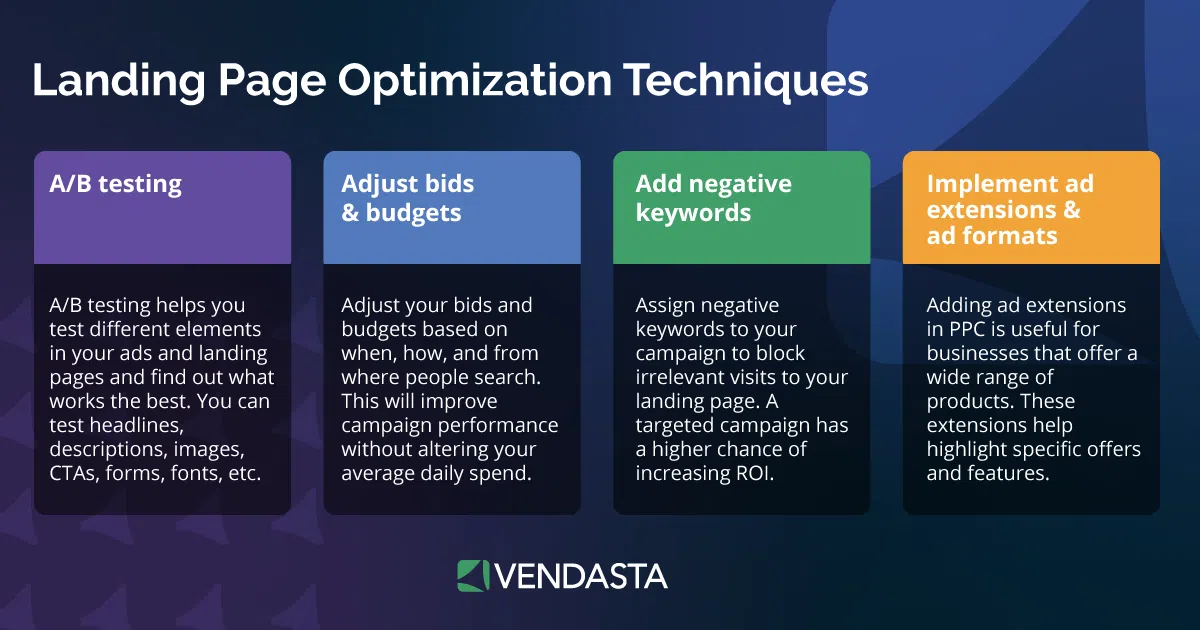
Your focus should be on building trust and visibility. Make sure the messaging speaks directly to your Ideal Customer Profile (ICP), articulates your unique selling proposition, and highlights the problems you solve.
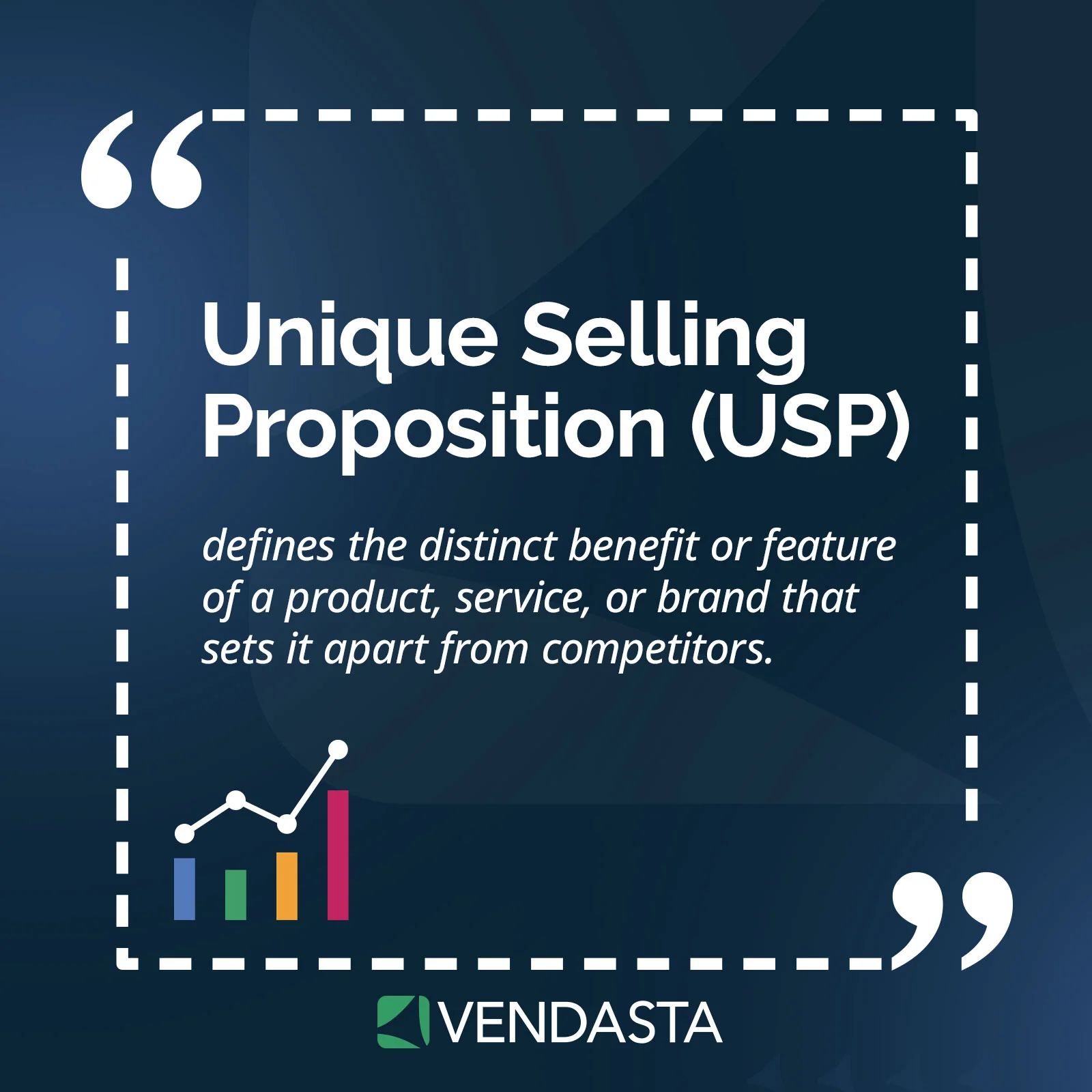
Consideration Stage
Goal: Nurture interest with value-driven interactions.
At this stage, your prospects are comparing you with competitors. They’re looking for proof, clarity, and guidance. To optimize this phase:
- Offer personalized demos and consultations that speak to specific pain points.
- Deliver nurturing email sequences based on user behavior (e.g., downloaded a guide, visited pricing page).
Tip: Use tools like Vendasta’s Snapshot Report to give prospects real-time insights into their business performance, adding immediate value and setting the stage for a sales conversation.
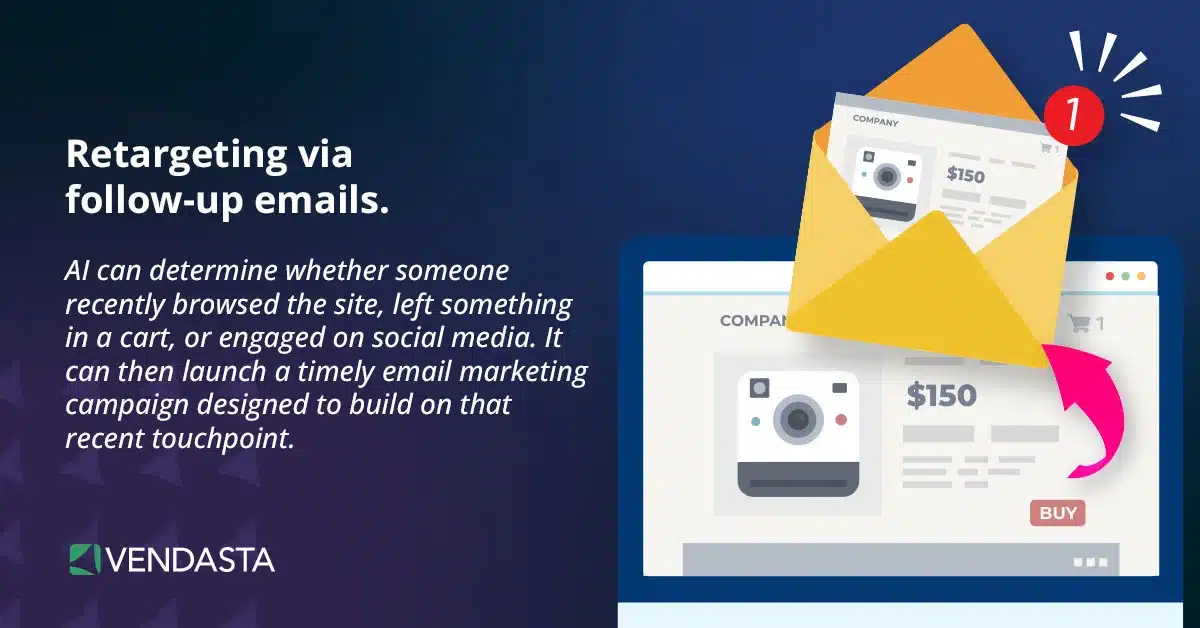
The key here is personalization—your messaging should show that you understand their challenges and offer tailored solutions.
Purchase Stage
Goal: Make it easy to buy.
Prospects are ready to commit, but even minor friction can cause hesitation. Here’s how to optimize the purchase stage:
- Simplify your checkout or sign-up process with minimal steps, autofill options, and clear calls to action.
- Offer transparent pricing with no hidden fees or vague service descriptions.
Tip: Use AI tools like Vendasta’s AI chatbot for websites to instantly book appointments, respond to inquiries, and avoid delays in closing deals.
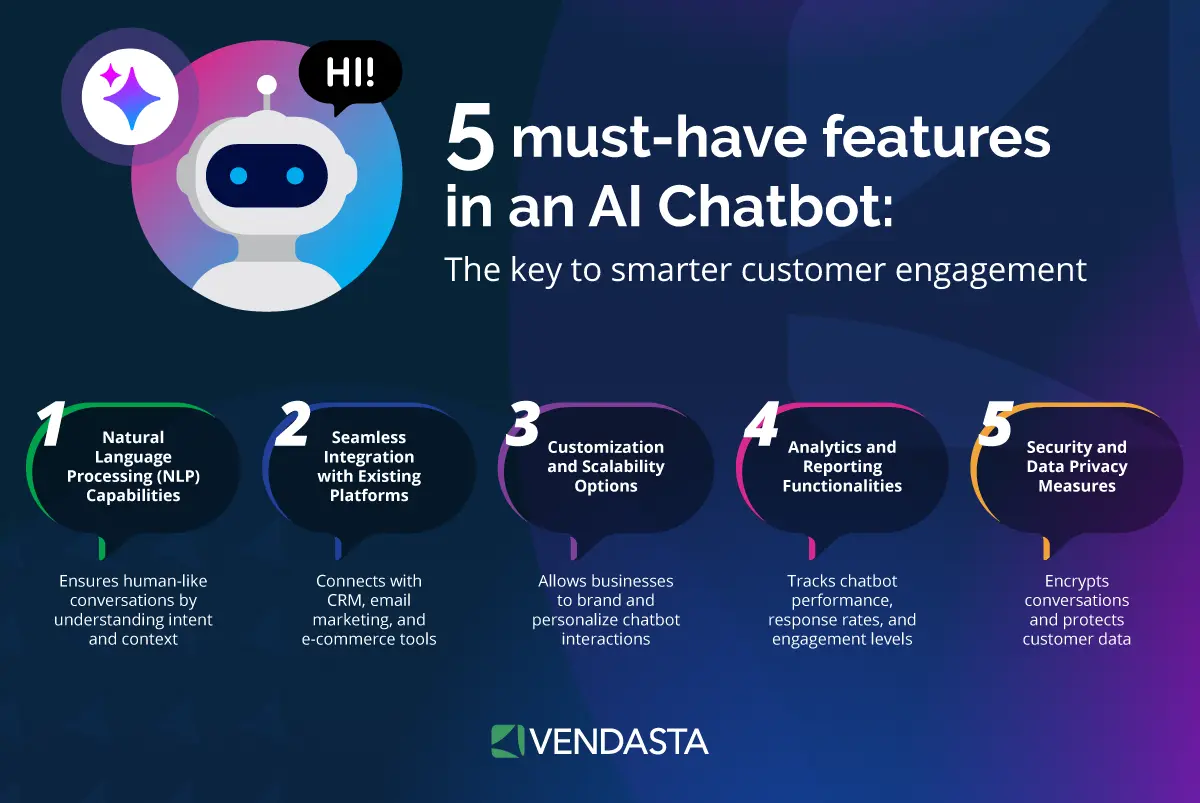
Eliminating uncertainty and streamlining the path to purchase significantly boosts conversion rates and customer confidence.
Retention Stage
Goal: Keep customers engaged, happy, and loyal.
The customer journey doesn’t end with a sale. Retention is where profitability truly scales. To optimize this phase:
- Onboard customers by using guided tutorials or personalized training.
- Launch loyalty programs or exclusive offers for long-term clients.
- Use CRM data to suggest personalized upsells and cross-sells based on behavior and needs.
- Provide proactive customer support, not just reactive problem-solving.
Retention-focused optimization turns satisfied clients into long-term relationships, reducing churn and increasing lifetime value.
For marketing agencies, one of the most effective ways you can improve retention is by giving clients clear visibility into their results. Using client dashboards, you can share real-time marketing metrics, ROI insights, and campaign performance updates in a transparent, digestible format.
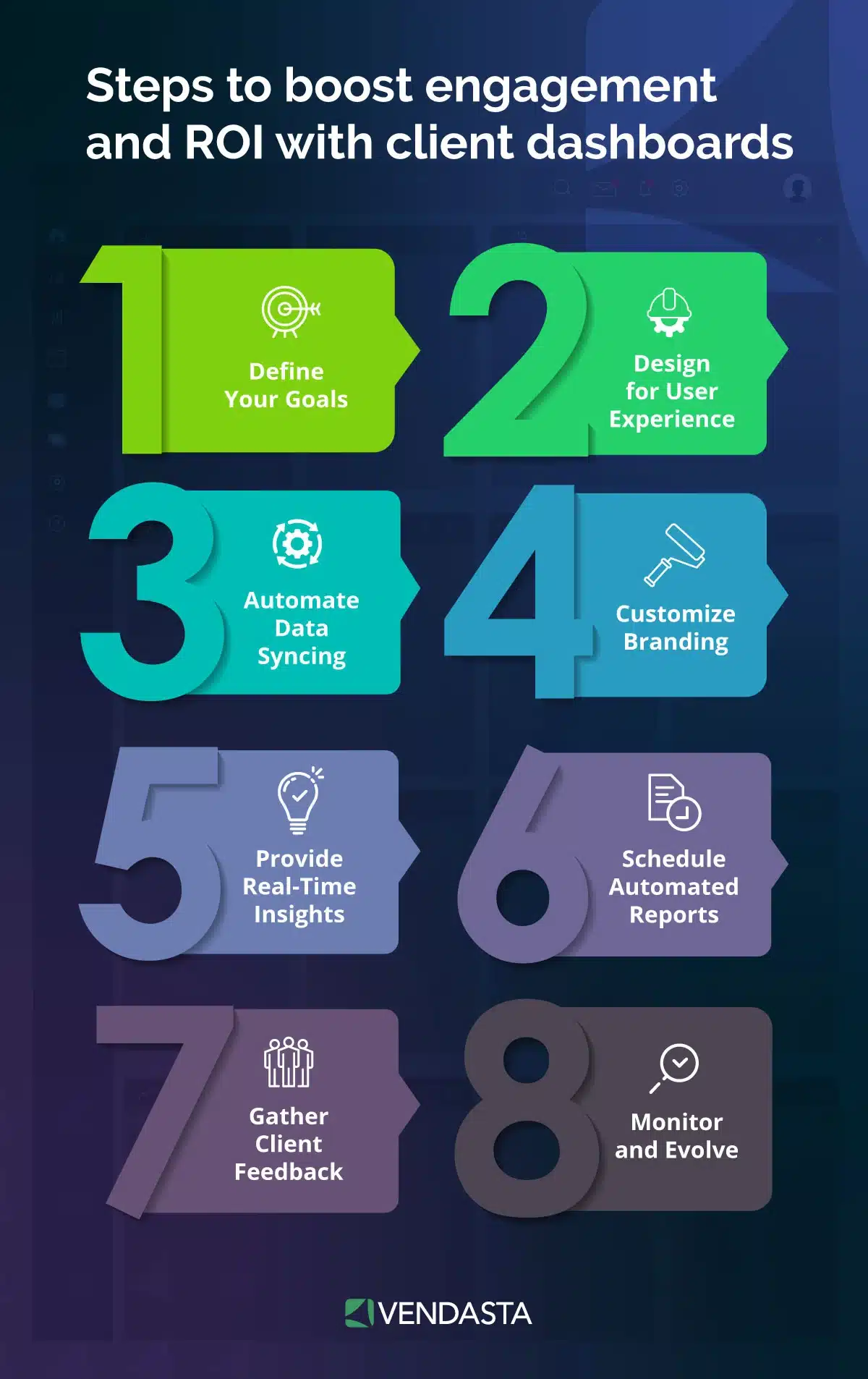
You should focus on steps like defining clear goals, automating data syncing, and providing real-time insights to maximize the impact of their dashboards. This level of transparency builds trust, reinforces the value your agency delivers, and keeps clients invested in the partnership for the long haul.
Advocacy Stage
Goal: Turn happy clients into brand champions.
A truly optimized customer journey results in clients who rave about your business. To activate this stage:
- Ask for reviews and testimonials at moments of high satisfaction (e.g., after a successful campaign or support resolution, or product experience).
- Create referral programs that incentivize sharing your business with others.
- Feature client success stories in your marketing to showcase impact and build social proof.
With AI marketing tools, you can automate review requests and capture positive feedback at scale, boosting online visibility and credibility with minimal manual effort.
Tools That Help With Customer Journey Optimization
CRM Systems
A Customer Relationship Management (CRM) system is one of the most powerful tools you can use to optimize the customer journey. It serves as a centralized hub where every interaction across sales, marketing, and service is recorded, tracked, and leveraged for smarter decision-making.
By unifying customer data in one place, CRMs empower you to:
- Track the full customer journey—from first touchpoint to post-sale engagement.
- Eliminate silos between departments by giving every team access to the same up-to-date information.
- Personalize at scale using historical behavior, preferences, and communication history.
- Automate outreach and follow-up actions based on real-time triggers and lifecycle stages.
Here’s a look at three popular CRM solutions that help businesses and marketing agencies drive growth through better customer journey optimization:
1. Vendasta’s AI-Powered CRM
Vendasta’s CRM is built specifically for SMBs and the partners who support them (such as marketing agencies, franchisors, and MSPs), combining automation, sales enablement, and AI-driven insights in one platform.
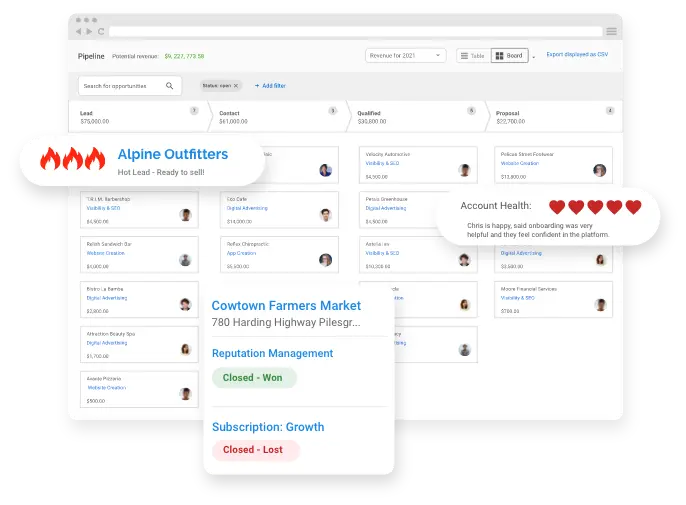
Pros:
- Seamless integration with Vendasta’s full suite of sales, marketing, and fulfillment tools.
- Built-in AI automation for appointment booking, lead follow-ups, and email outreach.
- Snapshot Reports and pipeline views tailored to SMB clients.
- Designed for white-label resale, perfect for agencies and resellers.
Cons:
- Best suited for partners that already use the Vendasta ecosystem.
- May be less customizable than enterprise-level CRMs.
Best For:
Agencies serving local businesses, especially those offering white-label solutions or bundled digital services, as well as franchisors, MSPs, and media companies.
2. HubSpot CRM
HubSpot offers a free-to-start, highly intuitive CRM platform that scales with your growth. It’s known for its marketing automation, sales tools, and user-friendly design.
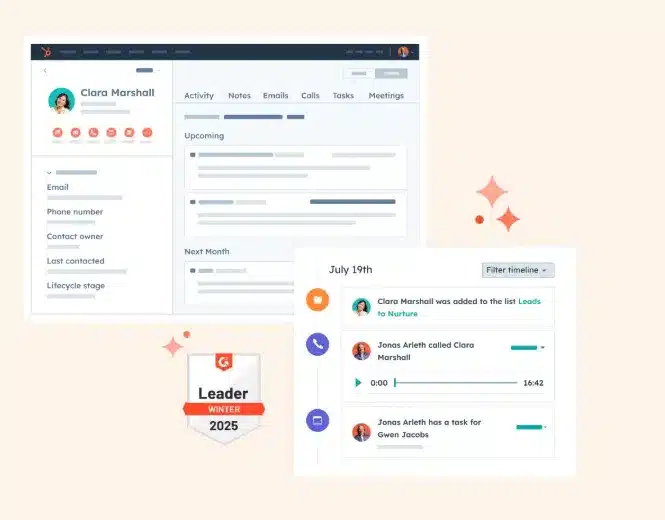
Pros:
- Easy setup with a generous free plan.
- Deep marketing automation capabilities.
- Strong reporting and email campaign features.
- Large ecosystem of integrations and add-ons.
Cons:
- Advanced features (like workflows, custom reporting) require expensive upgrades.
- Customization and automation options can be limited on lower tiers.
Best For: Small to mid-sized businesses looking for an all-in-one CRM and marketing platform with strong usability and growth potential.
3. Salesforce CRM
Salesforce is the global leader in enterprise CRMs, offering unmatched flexibility, customization, and integration capabilities. It’s ideal for businesses working with larger clients or complex operations.
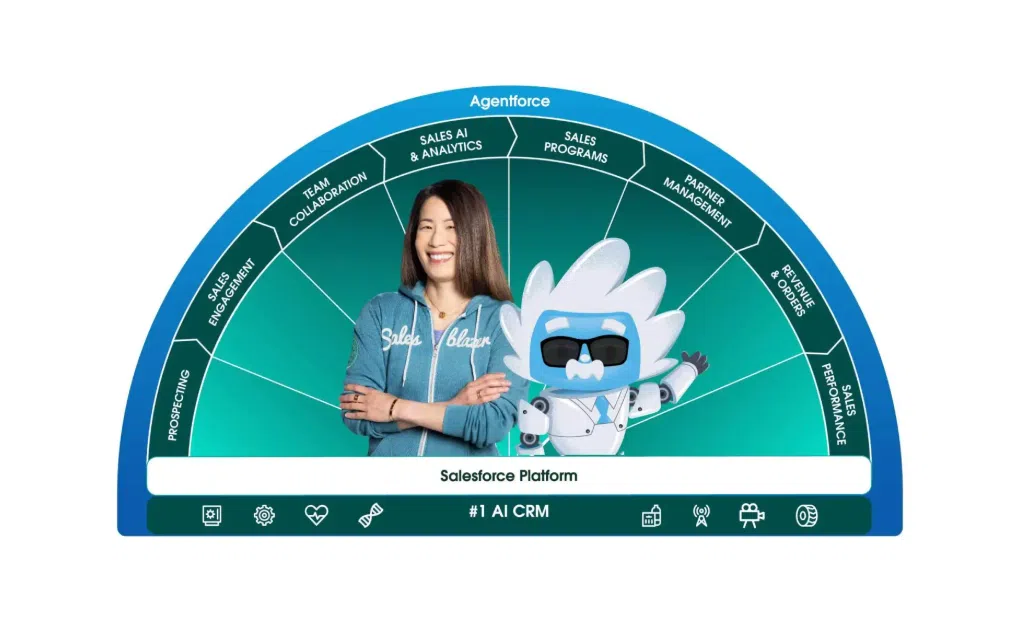
Pros:
- Extremely customizable and powerful reporting engine.
- Supports complex sales pipelines and multi-departmental collaboration.
- Massive integration ecosystem and third-party app support.
Cons:
- Steep learning curve and requires more setup time.
- Higher cost, especially with premium features and add-ons.
Best For: Enterprise-level businesses or those with large, cross-functional sales and marketing teams that need highly customizable solutions.
Email Marketing Platforms
Email marketing platforms play a critical role in customer journey optimization by helping businesses engage customers at exactly the right moment. From onboarding new clients to re-engaging dormant leads, email automation allows you to scale personalized messaging across the entire lifecycle.
With a powerful email platform, you can:
- Automate communications based on lifecycle triggers (signups, purchases, inactivity, etc.).
- Deliver highly personalized content, like nurture sequences, special offers, and onboarding guides.
- Analyze performance metrics like open rates, click-through rates (CTR), and engagement trends to refine campaigns and improve outcomes.
How to calculate email click-through rate:
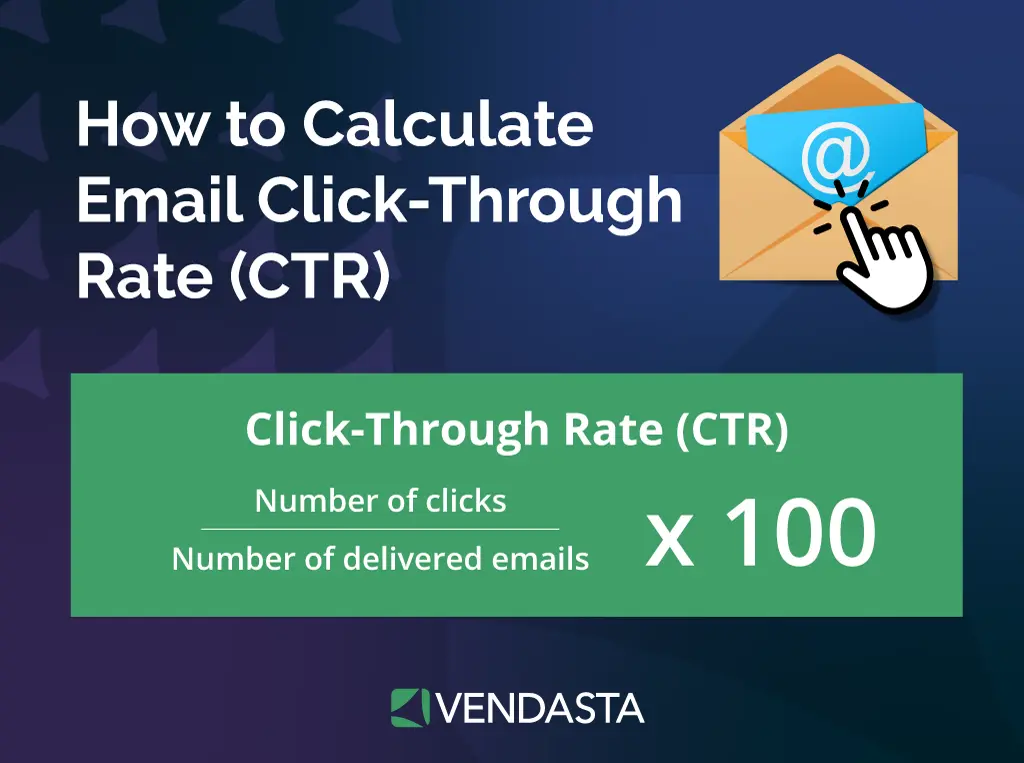
Here are three standout tools that businesses can use to streamline and optimize their email efforts:
1. Yesware
Vendasta Yesware, integrated within Vendasta’s platform, brings sales-focused email tracking and automation into your CRM workflow. It’s built for sales teams that want to communicate with precision and get real-time insights.
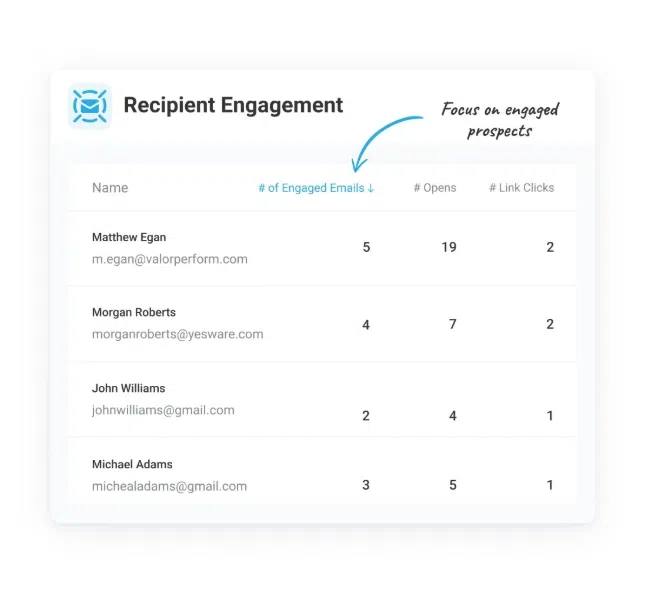
Yesware is included in Vendasta’s subscription plans. The Professional plan includes Yesware Pro, which offers features like unlimited email open tracking, email link tracking, and attachment tracking. The Premium plan includes Yesware Premium, which provides additional features such as shared templates, team reporting, and integrations with Zoom and Microsoft Teams.
Pros:
- Real-time email tracking: see who opens, clicks, or replies.
- Integrated directly with Gmail and Outlook.
- Templates and automated follow-ups save time and boost productivity.
- Works seamlessly with Vendasta’s CRM and pipeline tools.
Cons:
- Geared more toward sales enablement than large-scale marketing campaigns.
- Lacks advanced design features found in full-suite platforms.
Best For: Companies that want automated outreach and follow-ups, data-backed visibility into the sales process, and smarter email communication.
2. Mailchimp
Mailchimp is one of the most well-known and accessible email marketing platforms on the market. It offers strong automation, list segmentation, and analytics tools with a user-friendly interface.
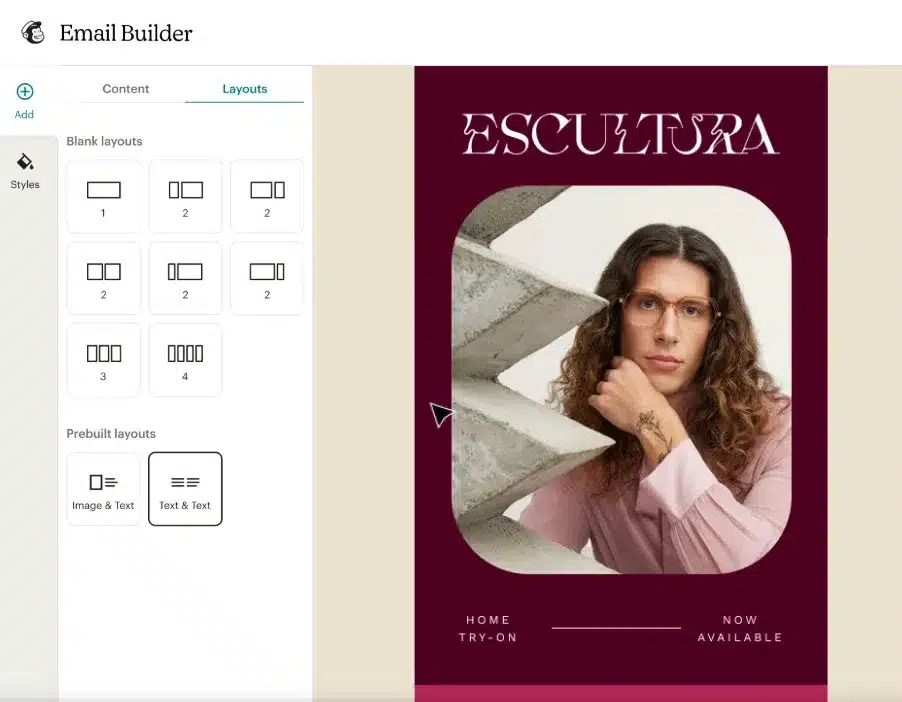
Pros:
- Intuitive drag-and-drop email builder.
- Pre-built automation workflows (e.g., abandoned cart, welcome emails).
- Extensive integrations and templates.
- Great free plan for startups and smaller agencies.
Cons:
- Can get expensive quickly with growing list sizes.
- Advanced automation and A/B testing features are gated behind higher tiers.
Best For: Businesses looking for a flexible platform to manage bulk campaigns, nurture sequences, and promotional emails.
3. Omnisend
Omnisend is an omnichannel email and SMS marketing platform built for e-commerce, but its automation power also benefits agencies serving retail and product-focused businesses.
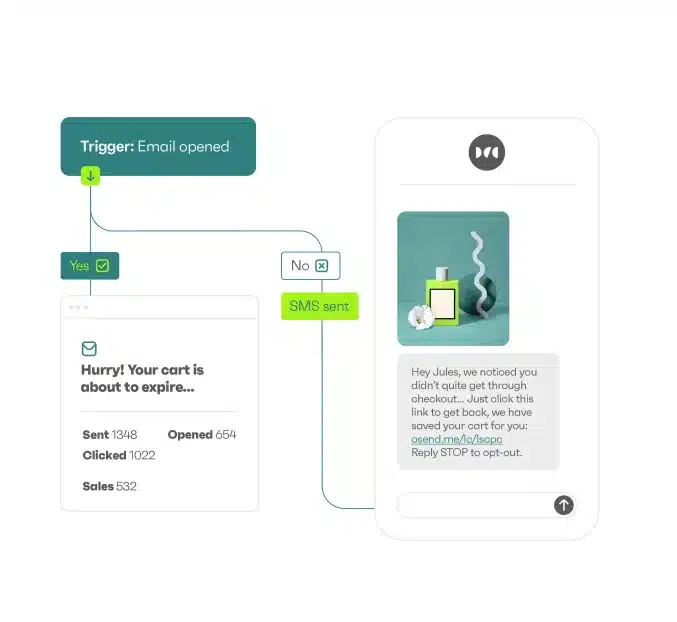
Pros:
- Advanced automation across email, SMS, and push notifications.
- Robust segmentation and personalization features.
- Smart triggers based on shopping behavior or CRM actions.
- Strong reporting and workflow visual builder.
Cons:
- Interface has a slight learning curve for non-ecommerce users.
- Pricing scales quickly with contact list size.
Best For: Businesses serving ecommerce or product-based businesses that need multi-channel automation and personalized workflows.
Customer Feedback Tools
No customer journey optimization strategy is complete without feedback. Customer feedback tools help businesses gather real, actionable insights that can be used to refine experiences, fix friction points, and build lasting loyalty. Whether it’s through reviews, surveys, or Net Promoter Scores (NPS), these tools give a direct line to what customers are thinking and feeling.
With the right feedback tools, you can:
- Collect reviews, surveys, and satisfaction scores at key touchpoints.
- Identify pain points in onboarding, support, or communication before they escalate.
- Show responsiveness by acting on feedback, improving customer satisfaction, leveraging client collaboration, and increasing retention.
Here are three top tools to help you collect and act on customer insights:
1. Vendasta’s Reputation Management Software
Vendasta’s Reputation Management software empowers agencies and their clients to automatically request, monitor, and respond to online reviews across dozens of platforms—all from one dashboard.
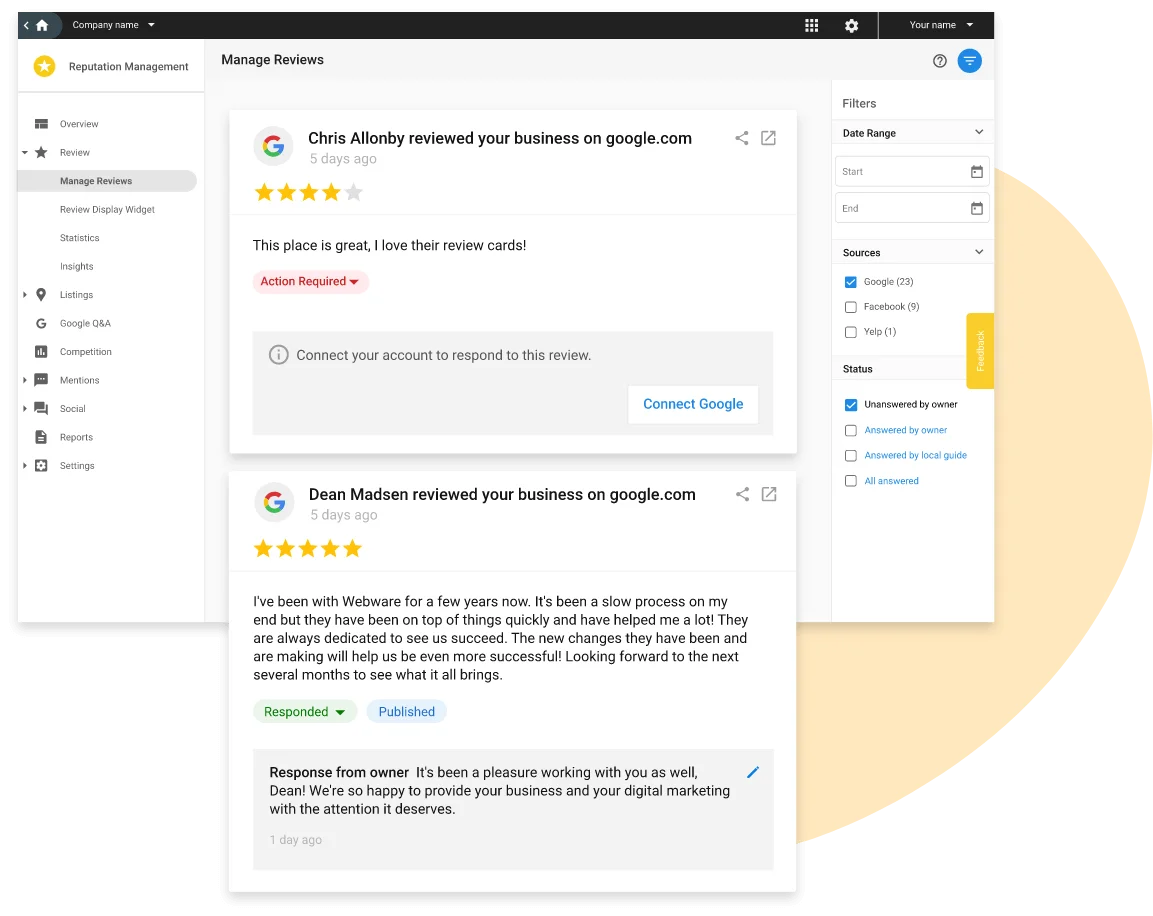
Pros:
- Automates review requests via email and SMS.
- Centralizes reviews from Google, Facebook, Yelp, and more.
- Sentiment analysis highlights themes in customer feedback.
- White-label client dashboard for seamless client delivery.
Cons:
- Focused on reviews and public feedback; not built for internal surveys.
Best For: Agencies and SMB-focused businesses that want to improve local SEO, reputation, and client retention by helping SMBs actively manage and respond to public reviews.
2. SurveyMonkey
SurveyMonkey is a flexible survey creation tool used for everything from customer satisfaction to product feedback. It’s ideal for gathering structured, detailed insights from customers at any stage of the journey.
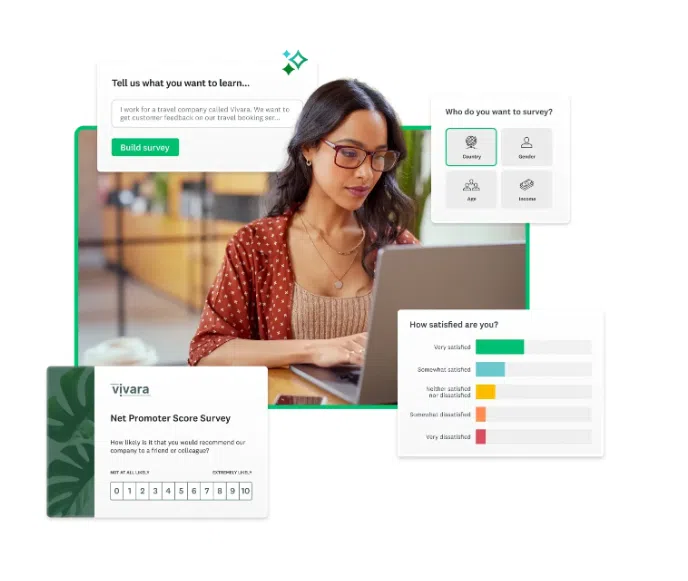
Pros:
- Easy-to-use survey builder with logic branching.
- Ready-to-use templates for NPS, CSAT, onboarding, and more.
- Embeddable in emails, websites, and CRMs.
- Strong analytics and data export features.
Cons:
- The free plan is limited in features and response counts.
- Less automation unless integrated with other tools.
Best For: Businesses that want to send in-depth surveys for customer research, onboarding feedback, or campaign performance assessments.
3. Retently
Retently is a specialized tool for NPS, CSAT, and CES (Customer Effort Score) surveys, with powerful automation and analytics capabilities.
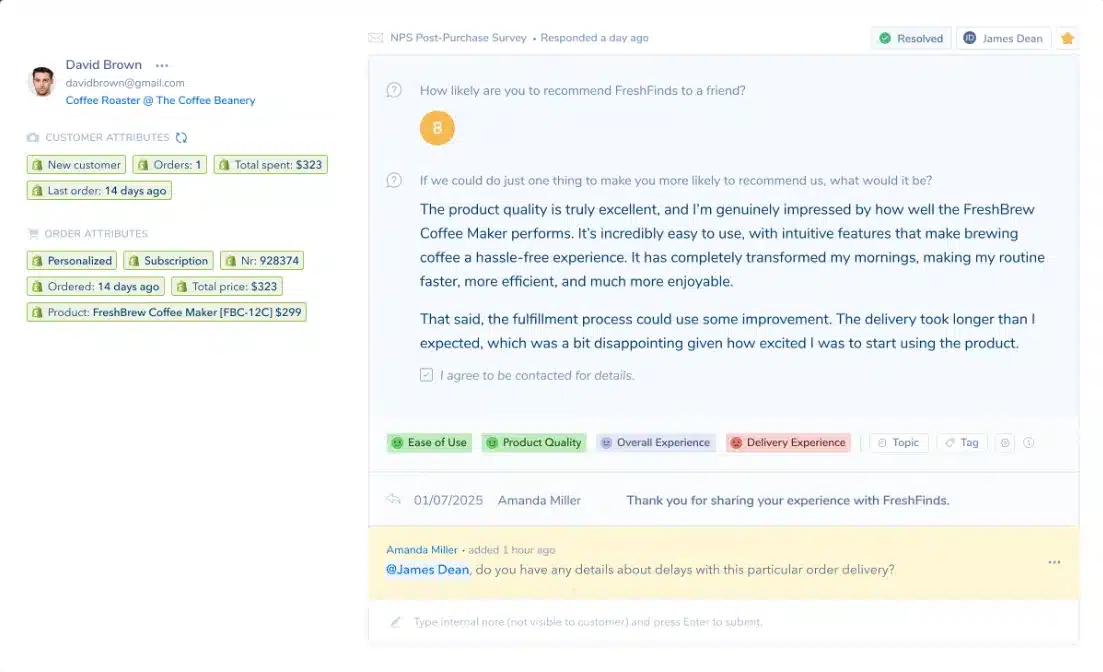
Pros:
- Designed specifically for recurring NPS and customer loyalty tracking.
- Automates survey sends based on lifecycle triggers.
- Segments customers by score for targeted follow-up.
- Integrates with major CRMs, email platforms, and support tools.
Cons:
- Focused exclusively on scoring surveys (no long-form or qualitative options).
- May be overkill for small companies with minimal feedback loops.
Best For: Businesses looking to track long-term customer satisfaction and loyalty trends across accounts, especially for high-value or recurring service models.
AI and Automation Platforms
As customer expectations rise, delivering personalized, timely interactions across every touchpoint can overwhelm even the most organized business. AI and automation platforms solve this challenge by streamlining repetitive tasks, surfacing real-time insights, and empowering your team to focus on high-value work.
With the right automation tools, you can:
- Automate lead nurturing, onboarding, and support, so no customer slips through the cracks.
- Use AI to predict customer needs, intent, and buying behavior.
- Deliver personalized interactions at scale, without adding headcount or increasing overhead.
Here are three powerful AI tools and automation platforms that can help you optimize the customer journey from start to finish:
1. Vendasta’s AI Chatbot for Websites
Vendasta’s AI Chatbot is a conversational AI assistant designed to engage website visitors instantly, qualify leads, and answer FAQs—day or night.
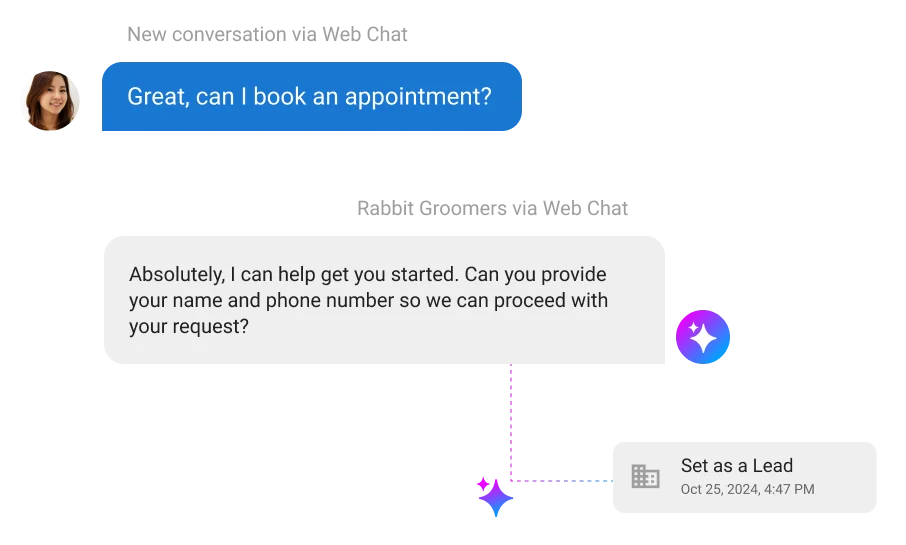
Pros:
- Instantly responds to inquiries and captures lead information.
- Personalizes messages based on visitor behavior and business type.
- Routes conversations to the right rep or triggers automated follow-ups.
- Fully integrated with Vendasta CRM and lead pipelines.
Cons:
- Best suited for SMB-focused agencies using the Vendasta platform.
- Less customizable than enterprise-level bots with extensive NLP libraries.
Best For: Agencies that want to automate front-line lead engagement while delivering a personalized experience, especially for clients with limited sales resources.
2. Salesloft
Salesloft is a revenue engagement platform that uses AI to optimize outreach timing, qualify leads, and guide reps with smart recommendations.
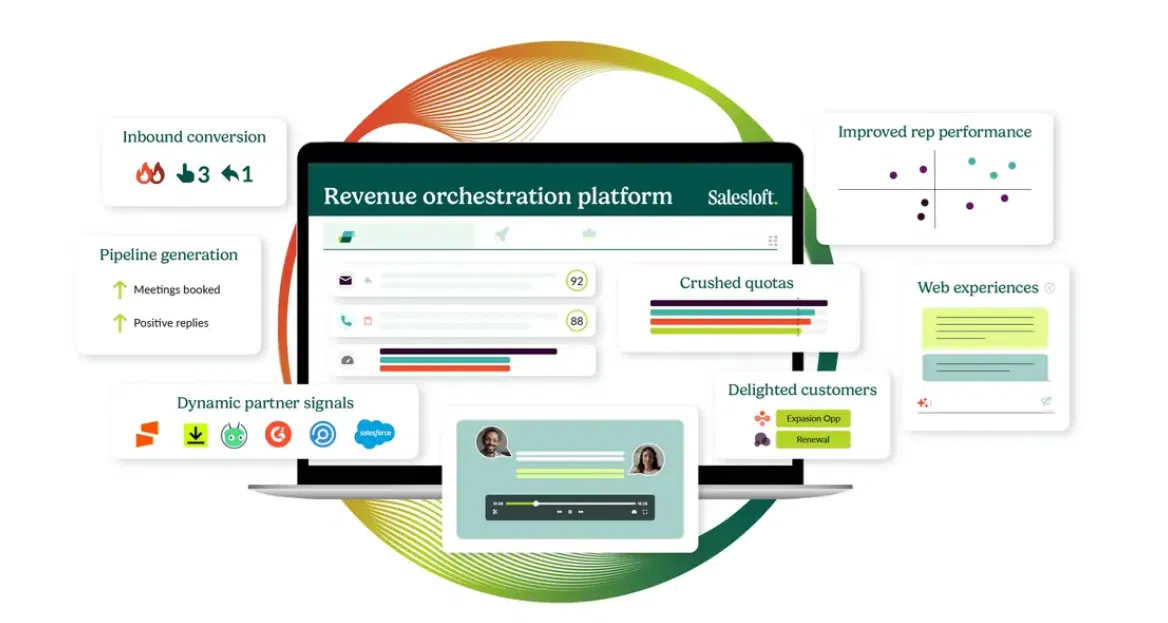
Pros:
- AI suggests the best time and channel to engage leads.
- Scores leads and identifies top prospects based on behavior and signals.
- Streamlines multi-touch cadences with automation.
- Integrates with Salesforce, HubSpot, and more.
Cons:
- Requires setup and ongoing management to fully leverage its AI potential.
- Higher price point than some basic outreach tools.
Best For: Mid to large businesses with outbound sales teams that need help prioritizing leads, improving rep performance, and scaling outreach intelligently.
3. Zendesk
Zendesk is a customer service and engagement platform that uses automation to streamline support, client onboarding, and follow-up tasks.
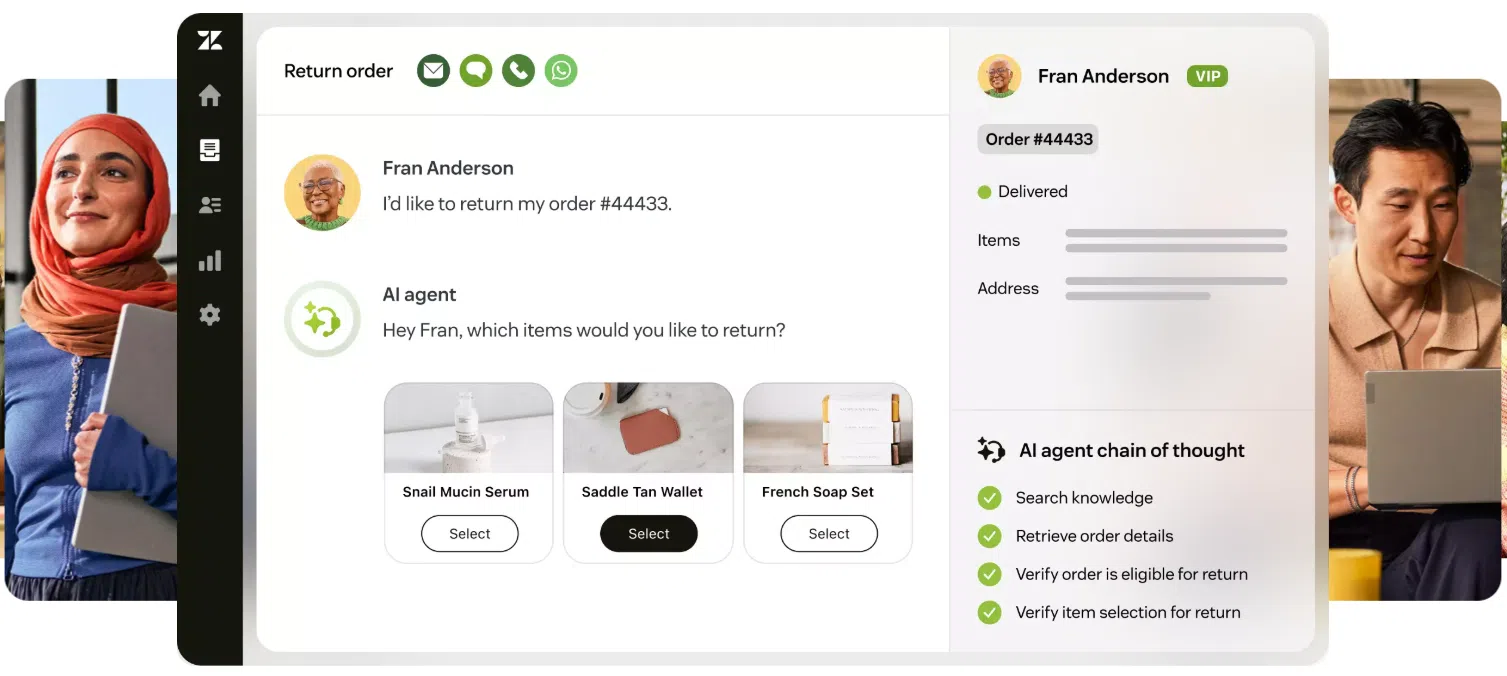
Pros:
- Automates ticket routing, knowledge base suggestions, and client onboarding flows.
- AI-powered bots provide instant responses to common queries.
- Includes robust workflow automation and reporting.
- Scales well for teams managing high client volumes.
Cons:
- Setup can be complex depending on the use case.
- Primarily built for support, not sales or marketing automation.
Best For: Businesses that want to improve client onboarding and provide scalable, efficient service without sacrificing the quality of their customer support.
How Vendasta Powers Customer Journey Optimization
As an all-in-one, AI-powered customer engagement platform, Vendasta combines CRM, marketing automation, sales enablement, and customer service tools into a single, streamlined software. It gives businesses everything they need to attract, convert, and retain clients, while automating the manual work that holds teams back.
But what exactly is a customer engagement platform? It’s a software that orchestrates interactions across marketing, sales, and support to deliver personalized, connected experiences throughout the entire customer lifecycle.
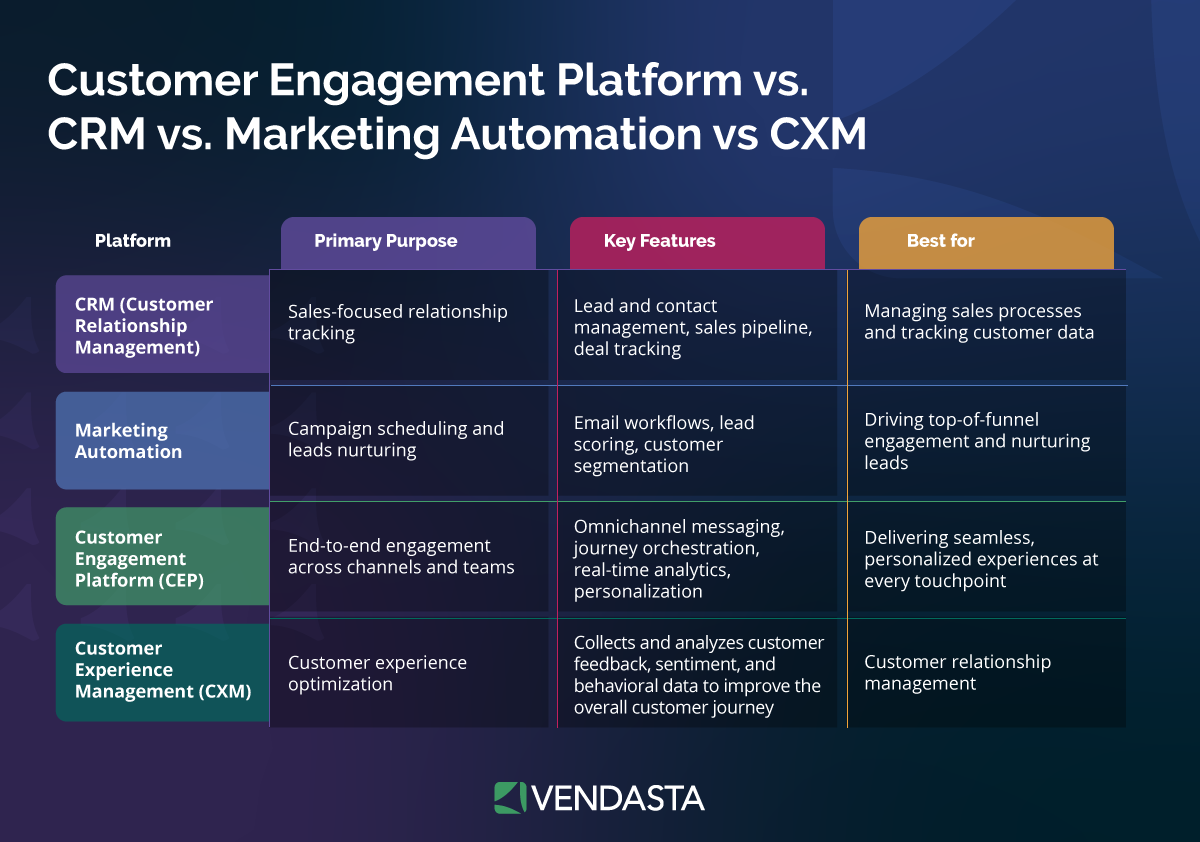
A comprehensive customer engagement platform solves the challenges most marketers face—unifying data, personalizing at scale, and improving customer retention through automation.
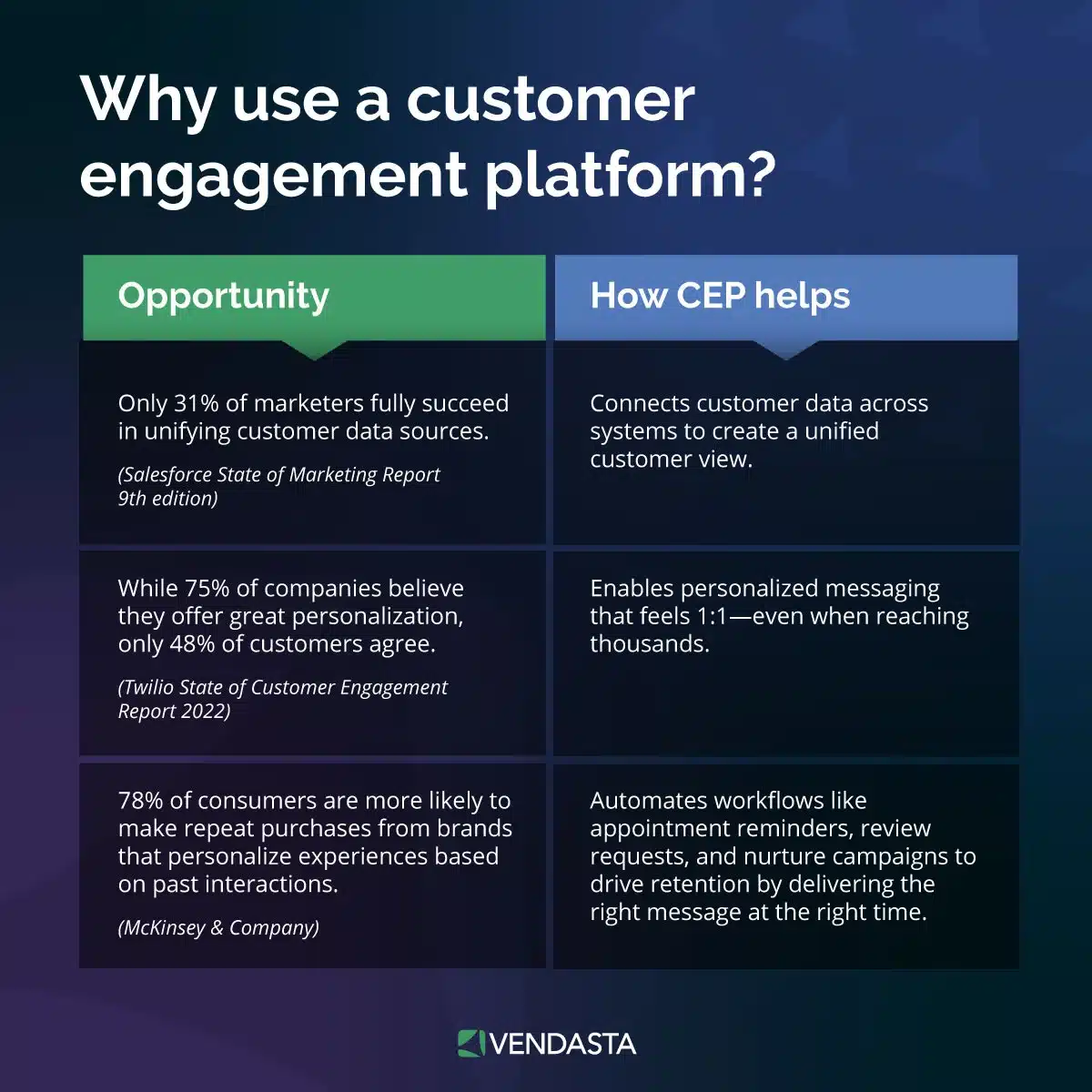
Let’s take a detailed look at what Vendasta’s customer engagement platform has to offer:
All-in-One Platform From Lead Generation to Loyalty
Vendasta eliminates the need for you to cobble together different AI marketing tools for every function. Instead, it provides a fully integrated platform to manage the entire customer journey—from initial outreach to long-term loyalty:
- Prospecting through Snapshot Reports and AI chatbots for websites.
- Sales and onboarding via the built-in CRM and proposal tools.
- Service delivery through a client portal and AI support reps.
- Retention and loyalty with automated NPS tracking, review generation, and personalized follow-ups.
Everything happens in one place, ensuring a frictionless experience for clients.
AI-Driven Engagement at Every Stage
Whether it’s lead generation, campaign execution, or customer support, Vendasta’s AI workforce helps you engage faster and more effectively.
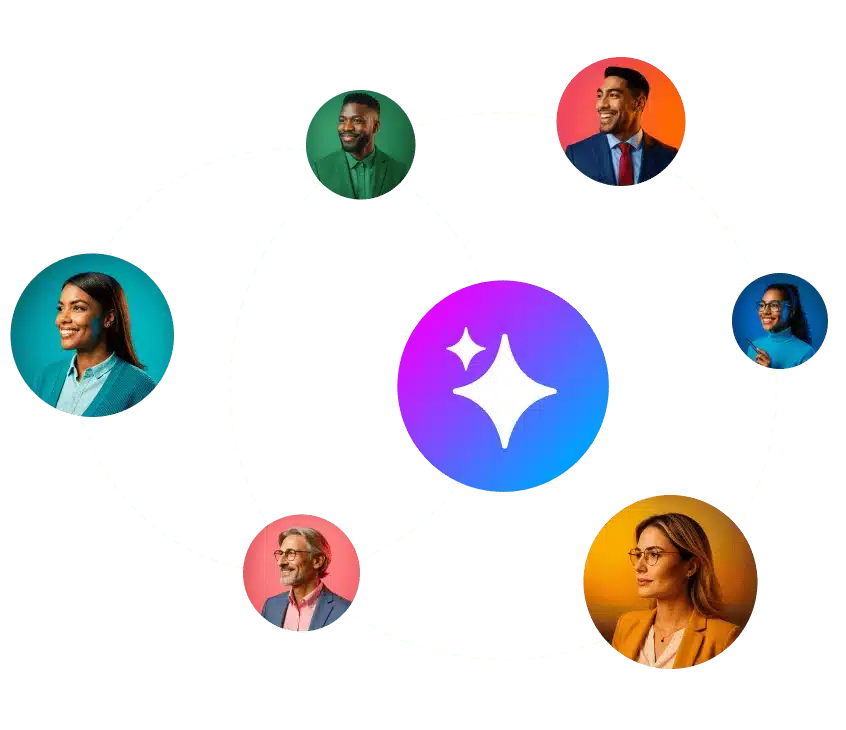
The AI Receptionist is designed to handle customer interactions efficiently and promptly. It provides quick and helpful responses through phone, chat, text, or connected sites. The AI Receptionist can answer questions, promote products and services, book appointments, and manage support issues, all without requiring hands-on management. This ensures that leads are never left waiting, enhancing customer engagement and satisfaction.
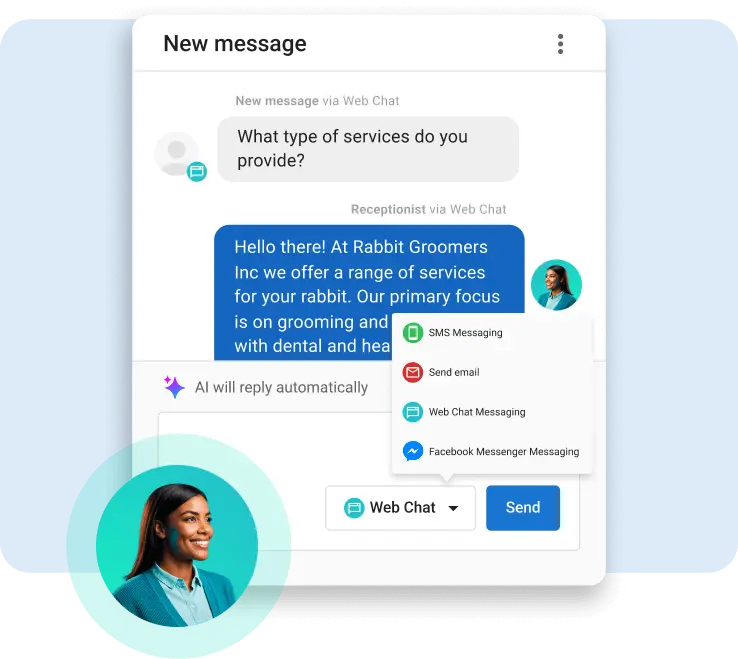
The AI Content Creator focuses on driving awareness and engagement with potential customers. It drafts, schedules, and posts content for websites, blogs, and social media platforms. The aim is to create content that captivates and converts, educating leads and driving new business opportunities. This AI tool helps businesses maintain a consistent online presence, ensuring that they stay top of mind for their audience.
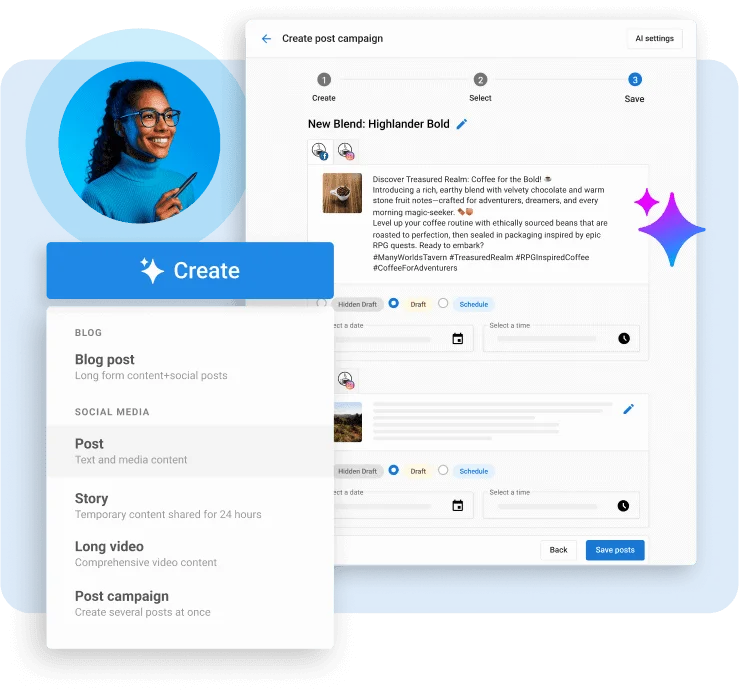
The AI Reputation Specialist is designed to help businesses cultivate a strong online reputation. It crafts thoughtful responses to customer reviews and posts on behalf of the business, ensuring that interactions are professional and positive. Additionally, it generates review requests to encourage more positive feedback and to effectively manage and respond to negative reviews. This tool aids in enhancing the business’s reputation, making it more likely for them to be chosen by customers.

AI employees improve speed to lead, boost conversion rates, and enhance customer satisfaction.
Deep Customer Data Integration for Personalization
Most marketers struggle to unify data across systems—only 31% succeed, according to Salesforce.
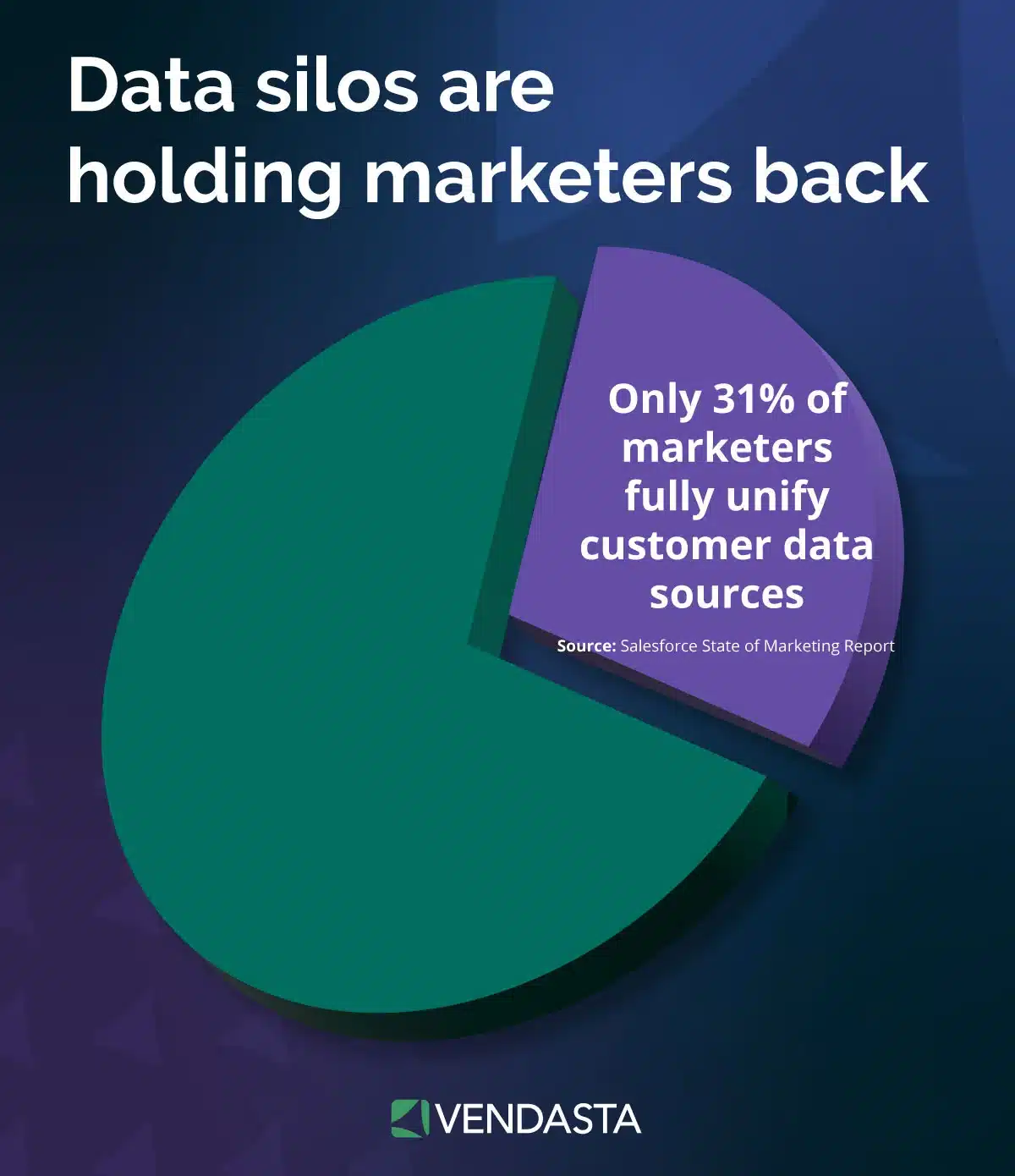
Vendasta solves this problem by consolidating data from every touchpoint—sales, marketing, customer service, and CRM—into a single view.
This enables businesses to:
- Track behavior in real time.
- Personalize messaging with pinpoint accuracy.
- Anticipate customer needs before they even ask.
With this level of insight, your team can create 1:1 personalized experiences at scale—a key driver of retention and repeat revenue.
Automation That Feels Human
While marketing automation is essential for scaling, it can often feel robotic. Vendasta’s AI is designed to behave like an extension of your team—context-aware, conversational, and customer-focused.
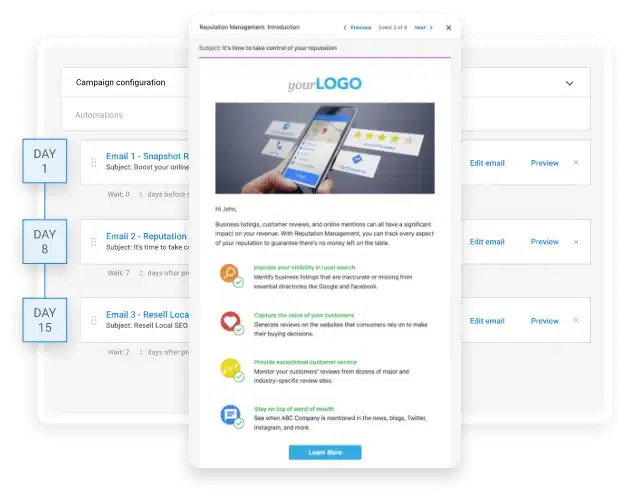
Smart workflows help automate:
- Appointment confirmations
- Follow-up reminders
- Feedback requests
- Upsell or renewal sequences
The result is a system that feels human, but doesn’t drain your human resources, allowing you to deliver better service without burning out your teams.
Real-Time Reporting and Insights
With Vendasta’s Executive Report, you and your clients get on-demand access to key performance metrics across the customer journey:
- Engagement rates
- Conversion rates
- NPS scores
- Revenue and customer lifetime value
These insights help identify what’s working, where friction exists, and how to optimize future campaigns.
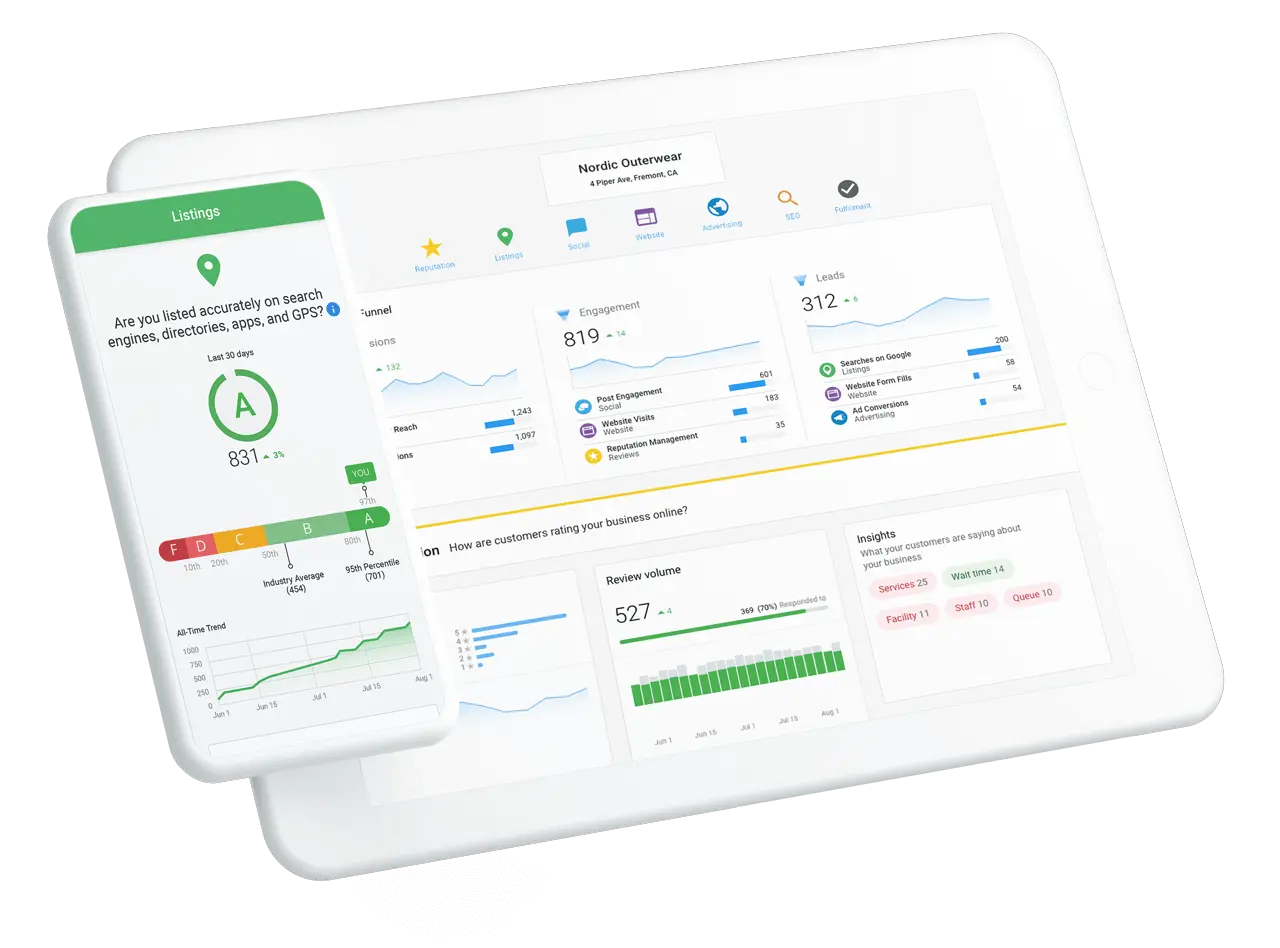
Why Customer Journey Optimization Is the Key to Growth
Today’s customers expect more than just a great product—they expect seamless, personalized experiences at every stage of their interaction with your brand. From discovery to decision, and from onboarding to advocacy, frictionless journeys are no longer a nice-to-have—they’re a competitive necessity.
Businesses that invest in customer journey optimization consistently outperform those that don’t:
- They see higher conversion rates because prospects move smoothly from interest to action.
- They enjoy better customer retention because clients feel seen, supported, and valued.
- And they unlock greater customer lifetime value by nurturing long-term relationships with tailored engagement and timely support.
Vendasta provides a purpose-built, AI-powered customer engagement platform that helps businesses unify tools, automate touchpoints, and deliver meaningful experiences at scale. With Vendasta, you can manage and optimize the entire customer journey from one place, without sacrificing personalization or overwhelming your team.
Start optimizing your customer journey today with Vendasta. Book a free demo today.
Customer Journey Optimization FAQs
1. What are the main challenges in customer journey optimization?
Optimizing the customer journey can significantly boost conversions and retention—but it’s not without challenges. The most common roadblocks businesses face include:
- Fragmented data across systems
- Lack of customer insights
- Difficulty personalizing at scale
- Resource constraints
AI-powered customer engagement platforms like Vendasta address these challenges head-on.
2. How does AI improve customer journey optimization?
AI plays a transformative role in customer journey optimization by making interactions faster, smarter, and more personalized, without overloading your team. Here’s how it works:
- Automates repetitive tasks like lead nurturing, client onboarding, appointment scheduling, and follow-ups.
- Analyzes data in real time. AI tools process large volumes of customer data, like behavior patterns, preferences, and engagement history, to surface actionable insights.
- Delivers personalized experiences at scale from sending targeted emails to recommending next-best actions.
3. What metrics should I track to measure customer journey optimization success?
To measure the success of your customer journey optimization efforts, track metrics that align with both performance and customer experience:
- Conversion rates at each stage (awareness, consideration, purchase) to see where prospects are dropping off or moving forward.
- Customer satisfaction scores like NPS (Net Promoter Score) to gauge client loyalty and sentiment.
- Customer retention and churn rates to evaluate how well you’re maintaining long-term relationships.
- Average customer lifetime value (LTV) to understand how much revenue a customer brings in over time.
Tracking these KPIs helps you identify what’s working, where friction exists, and where to focus your next customer journey optimization efforts.
4. How often should I update or optimize the customer journey?
Customer behaviors and expectations evolve rapidly—so should your journey. Optimization should be an ongoing process, not a one-time project.
We recommend:
- Reviewing journey maps quarterly, or
- After launching major campaigns, new services, or product updates.
Using a platform like Vendasta enables continuous optimization with real-time performance data, automated feedback collection, and dynamic workflows that adjust as customer needs change.
5. What is the difference between customer journey mapping and customer journey optimization?
While closely related, journey mapping and optimization serve different purposes:
- Customer journey mapping is the process of visualizing the steps a customer takes with your brand, from first touchpoint to loyalty.
- Customer journey optimization goes a step further by actively improving each stage to remove friction, personalize interactions, and drive better outcomes.
Mapping helps you understand. Optimization helps you grow. Both are essential, but it’s optimization that delivers real impact through higher retention, conversions, and customer satisfaction.
6. Can customer journey optimization be automated?
Yes—many parts of the customer journey can be automated, especially with modern AI and marketing automation tools. This includes:
- Lead nurturing through email and SMS workflows
- Onboarding sequences and training touchpoints
- Feedback collection with automated NPS or review requests
- Loyalty campaigns and upsell recommendations
Platforms like Vendasta offer smart automation tools—like AI employees and workflow builders—that personalize experiences at scale. This helps businesses facilitate better customer journeys while saving time and resources.
7. How long does it take to see results from customer journey optimization?
It depends on the complexity of your business and how much of the journey you’re optimizing. That said, many businesses see results within weeks, especially when implementing automation for lead nurturing, appointment booking, or onboarding.
8. Who should be responsible for customer journey optimization in a company?
Customer journey optimization should be a cross-functional effort involving:
- Marketing, to shape messaging and personalization.
- Sales, to improve lead handling and conversion.
- Customer success and support, to deliver value and retain clients.
- Product or operations, to ensure the customer experience is smooth and aligned with the brand promise.
Some organizations designate a Customer Experience (CX) Manager or Growth Manager to oversee the entire customer journey optimization. With platforms like Vendasta, all teams can collaborate in one system with shared visibility, making joint ownership more efficient and actionable.
9. What are some examples of customer journey optimizations?
Here are practical examples of optimizations you can implement today:
- Send automated follow-up emails after product demos to keep leads engaged.
- Personalize website content based on user behavior or traffic source.
- Automate onboarding workflows for new clients with step-by-step guides.
- Trigger NPS surveys after a support ticket is resolved to gather feedback.
- Use AI-powered recommendations to suggest relevant upsells or cross-sells during renewal periods.
Each of these improvements reduces friction, increases value, and strengthens the customer relationship at key points in the customer journey.


